Alex Li Trisoglio
Madhyamakavatara Week 8: Applying the View in Life
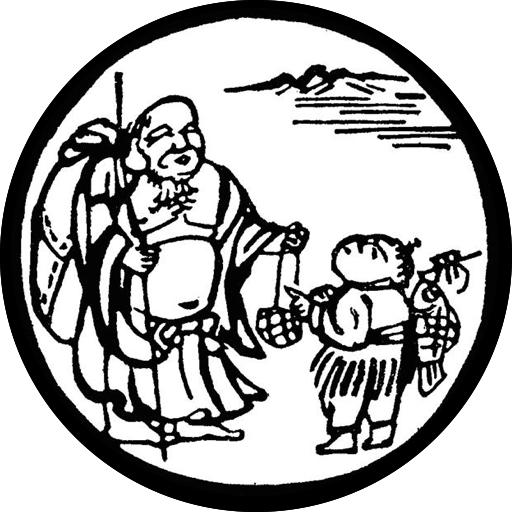
Week 8: Applying the View in Life: Post-Meditation & Everyday Life
26 July 2017 / 142 minutes
Question: How might we apply the view in post-meditation and in our everyday life (e.g. in relationships, at work, etc.)
Reference: n/a
Transcript / Pre-reading / Audio / Video

Introduction [t = 0:00:06]
Good evening everyone, I’m Alex Trisoglio and I’d like to welcome you to Week 8, the last week of Introduction to the Middle Way. Before we start, I’d like to invite us all to just take a moment to set our intention, our aspiration. This week we are going to be talking about how everything we do in life is practice. And listening to teachings is also practice. So just take a moment to set the intention that you will listen to these teachings for the sake of enlightening all sentient beings. Think about what that means for you in terms of how you would like to listen to the teachings.
[10 seconds]
Last week we completed Chandrakirti’s text, the Madhyamakavatara. We spent quite some time on Chapter 11, with its description of enlightenment and the qualities of the Buddha. In particular, we talked about how Chandrakirti emphasizes their inconceivability, which is what you would expect. He is describing non-duality, and we know that we cannot reduce or express the non-dual in concepts and language. At best, we might have a finger pointing towards the moon.
We also talked about applying the view of non-duality in our meditation practice. We talked about how this means changing our subject, our projections. We talked about cultivating equality, equanimity, and preferencelessness, for example in the way that we want to ensure that we treat others in the same way, no matter if they are friend or enemy. We talked about learning to take accountability for our projections, as in Chapter 6 from Shantideva’s Bodhicharyavatara, the chapter on Patience, where he describes how in working with anger he changed his stance from seeing the other person as the aggressor to seeing himself as the one contributing to the other person’s suffering . It’s this kind of radical transformation that emptiness enables. We also talked about compassion as a practical path to approach non-duality which, as we said, is inconceivable. Non-duality is too abstract, so it’s very hard for us to figure out what it means to ‘practice emptiness’ directly. But one of the wonderful things about the Buddhist path is that we have a complete gradual path based on bodhicitta, based on the paramitas, that helps us to get there. I’d like to build on these ideas this week, especially the emphasis on compassion and how we can use our everyday lives as part of our practice.
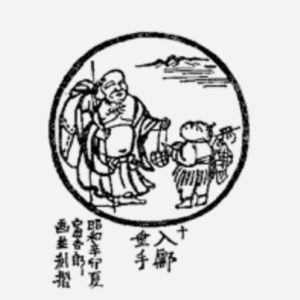
In the world [t = 0:03:17]
10. In the World
Barefooted and naked of breast, I mingle with the people of the world.
My clothes are ragged and dust-laden, and I am ever blissful.
I use no magic to extend my life;
Now, before me, the dead trees become alive.
Comment: Inside my gate, a thousand sages do not know me. The beauty of my garden is invisible. Why should one search for the footprints of the patriarchs? I go to the market place with my wine bottle and return home with my staff. I visit the wine shop and the market, and everyone I look upon becomes enlightened.
I personally love this verse. The idea here of mingling with the people of the world and ‘everyone I look upon becomes enlightened’ – this is very much about what we touched upon last week: How does the bodhisattva benefit sentient beings? This 10th bull describes the non-dual bodhisattva out in the world, benefiting spontaneously and without dualistic intention. And this is another great thing that Buddhism offers us, because we have the example of the sage, of the dzogchen yogi, as an example of non-duality in practice. We might think of these as mere stories, something poetic or mythical perhaps, but I really want to encourage you to see them as actual role models. As we saw last week, having role models is critical in any journey of change, and one of the wonderful things here is that we actually have role models.
We’re going to spend quite a lot of time this week exploring what it means to act in this kind of non-dual way. As we said last week, the challenge is that we don’t know how to behave like that right away. We don’t know what it means to practice non-duality. So we need some kind of gradual path of practice. So I’d like to talk this week about both the non-dual way of being in the world, and the gradual path of practice in the world that can lead us to non-duality.
Once again we’re going to talk about the Two Truths, but this time not at an intellectual level. Instead we’ll talk about what they mean in practice, and in particular we’ll look at emptiness in the classic Shravakayana and Mahayana paths of practice – the Eightfold Path and the Six Paramitas. We’ll look at those both from the perspective of a gradual path and from the perspective of the non-dual path. Along the way I’ll offer various quotes from Buddhist and non-Buddhist sources, again with the aspiration of giving us alternative ways of understanding and accessing these teachings, knowing that the path teachings resonate differently with each of us.

Hero’s Journey [t = 0:06:36]
We are at the final stage of the Hero’s Journey. We are now in Act III, which is all about bringing our gift or our boon back into the world. In this case, the gift is the view of emptiness. When we learn about generosity in the paramitas, we know that it includes material generosity and protection from fear, but the highest form of generosity is to teach the Dharma, to offer the truth. So it’s actually very appropriate that what we are going to give as our highest gift is our realization of emptiness.
We mentioned previously that Joseph Campbell has a 17-stage model of the Hero’s Journey, and now we come to the last three stages of the journey:
(#15) The Crossing of the Return Threshold: The trick in returning is to retain the wisdom gained on the quest, to integrate that wisdom into a human life, and then maybe figure out how to share the wisdom with the rest of the world.
That’s exactly what we are trying to do this week: how are we going to integrate this wisdom? And how are we going to share it through the course of our engagement with our world?
(#16) Master of Two Worlds: This step is usually represented by a transcendental hero like Jesus or Gautama Buddha. For a human hero, it may mean achieving a balance between the material and spiritual. The person has become comfortable and competent in both the inner and outer worlds.
Actually here I wouldn’t use the word ‘balance’; I prefer the word ‘synthesis’, because we’re going beyond trying to find a middle point of balance between two opposites. With the Middle Way, we’re going beyond all opposites and dualistic extremes. We’re going beyond samsara and beyond nirvana. We’re trying to synthesize and not be trapped in either pole: not remaining in nirvana, and not abandoning samsara.
(#17) Freedom to Live: Mastery leads to freedom from the fear of death, which in turn is the freedom to live. This is sometimes referred to as living in the moment, neither anticipating the future nor regretting the past.
Although Campbell is coming from a very different perspective and background than the Middle Way teachings, he’s ending up in a place where the language sounds very similar. And on the topic of giving our gift and sharing it with the world, I’d like to quote the author Toni Morrison:
I tell my students, “When you get these jobs that you have been so brilliantly trained for, just remember that your real job is that if you are free, you need to free somebody else. If you have some power, then your job is to empower somebody else. This is not just a grab-bag candy game.”
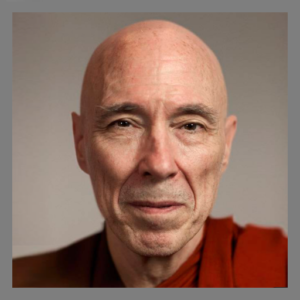
Self-transformation and self-transcendence [t = 0:09:50]
Now we return once again to the Two Truths. We already saw at the end of Chapter 6, in verse 6:226, that the king of swans flies on the two wings of ultimate and relative truth, wisdom and compassion. And we also heard the words of Guru Rinpoche Padmasambhava:
Though my view is as spacious as the sky,
My actions and respect for cause and effect are as fine as grains of flour
This is very much talking about emptiness in the world, which is all about our actions and our respect for cause and effect. We know that view without practice, without action, is just an intellectual understanding. It won’t transform our meditation. It won’t transform our action in the world. As Rinpoche says, 98% of the path is practice. This week we are not talking about practice simply in the sense of sitting on your meditation cushion, but how you are bringing your practice into the world. How are you using the rest of your day to practice, and to embody and realize this non-dual view? Your actions, your respect for cause and effect are just as important here. But the opposite is also true. If we are just paying attention to cause and effect in samsara, we are just ordinary worldly sentient beings, just trying to make sense of the world, make things work in the world, chasing after worldly happiness and success and not actually practicing the Dharma.
Until now we have talked about the Two Truths intellectually. We’ve used language like ‘ultimate truth’ and ‘conventional truth’, but for most of us it’s very confusing. We don’t really know what it means. We don’t really know what to do with it. Having said that, it is a central idea in these teachings, so I’d like to explore some more practical ways of talking about it. First I’d like to introduce you to a wonderful article called “Self Transformation” by Bhikkhu Bodhi, which is in the pre-reading. He distinguishes between what he calls ‘self-transformation’ from ‘self-transcendence’, and as you’ll see this does actually correspond to the Two Truths, and to wisdom and compassion:
[Self-transformation]: This desire for a transformed personality, for the emergence of a new man from the ashes of the old, is one of the perennial lures of the human heart. From ancient times it has been a potent wellspring of the spiritual quest, and even in the secular, life-affirming culture of our own cosmopolitan age this longing has not totally disappeared. […] Where previously this urge sought fulfilment in the temple, ashram and monastery, it now resorts to new venues: the office of the psychoanalyst, the weekend workshop, the panoply of newly spawned therapies and cults. However, despite the change of scene and conceptual framework, the basic pattern remains the same. Disgruntled with the ruts of our ingrained habits, we long to exchange all that is dense and constrictive in our personalities for a new, lighter, freer mode of being.
Self-transformation is also a fundamental goal of the Buddha’s teaching, an essential part of his program for liberation from suffering. The Dhamma was never intended for those who are already perfect saints. It is addressed to fallible human beings beset with all the shortcomings typical of unpolished human nature: conduct that is fickle and impulsive, minds that are tainted by greed, anger and selfishness, views that are distorted and habits that lead to harm for oneself and others. The purpose of the teaching is to transform such people — ourselves — into “accomplished ones”: into those whose every action is pure, whose minds are calm and composed, whose wisdom has fathomed the deepest truths and whose conduct is always marked by a compassionate concern for others and for the welfare of the world.
[Self-transcendence]: What distinguishes the Buddha’s program for self-transformation from the multitude of other systems proposing a similar end is the contribution made by another principle with which it is invariably conjoined. This is the principle of self-transcendence, the endeavour to relinquish all attempts to establish a sense of solid personal identity. In the Buddhist training the aim of transforming the personality must be complemented by a parallel effort to overcome all identification with the elements that constitute our phenomenal being. The teaching of anatta or not-self is not so much a philosophical thesis calling for intellectual assent as a prescription for self-transcendence. It maintains that our ongoing attempt to establish a sense of identity by taking our personalities to be “I” and “mine” is in actuality a project born out of clinging, a project that at the same time lies at the root of our suffering. If, therefore, we seek to be free from suffering, we cannot stop with the transformation of the personality into some sublime and elevated mode as the final goal. What is needed, rather, is a transformation that brings about the removal of clinging, and with it, the removal of all tendencies to self-affirmation.
It is important to stress this transcendent aspect of the Dhamma because, in our own time when “immanent” secular values are ascendant, the temptation is great to let this aspect drop out of sight. If we assume that the worth of a practice consists solely in its ability to yield concrete this-worldly results, we may incline to view the Dhamma simply as a means of refining and healing the divided personality, leading in the end to a renewed affirmation of our mundane selves and our situation in the world.
In the proper practice of the Dhamma both principles, that of self-transformation and that of self-transcendence, are equally crucial. The principle of self-transformation alone is blind, leading at best to an ennobled personality but not to a liberated one. The principle of self-transcendence alone is barren, leading to a cold ascetic withdrawal devoid of the potential for enlightenment.
I love this: it is very beautiful language around the Two Truths. And as Bhikkhu Bodhi says, if you have no wisdom, it means you’re blind; if you have no compassion, it means you’re barren. We need both, just like the king of swans flies on two wings. I also love the way he uses everyday language like ‘self-transformation’ and ‘self-transcendence’, and for many of us this is much more straightforward and easy to relate to than ‘ultimate truth’ and ’conventional truth’. Next, he talks about what this means for the path:
Of the two principles, that of self-transcendence claims primacy both at the beginning of the path and at the end. For it is this principle that gives direction to the process of self-transformation, revealing the goal toward which a transformation of the personality should lead and the nature of the changes required to bring the goal within our reach. However, the Buddhist path is not a perpendicular ascent to be scaled with picks, ropes and studded boots, but a step-by-step training which unfolds in a natural progression. Thus the abrupt challenge of self-transcendence — the relinquishing of all points of attachment — is met and mastered by the gradual process of self-transformation. By moral discipline, mental purification and the development of insight, we advance by stages from our original condition of bondage to the domain of untrammelled freedom.
Bhikkhu Bodhi’s language of self-transformation and self-transcendence is an alternative way of talking about the Two Truths that can help us to ground Chandrakirti’s wisdom in our lives, and it offers important insights for our practice and post-meditation.

Elegance and outrageousness [t = 0:18:06]
Another completely different approach to the Two Truths may be found in Rinpoche’s wonderful teaching on ‘elegance and outrageousness’, which is from a teaching on the Bodhicharyavatara that he gave in Berlin in 1990:
Outrageousness: Many people think that outrageousness means being free, being able to express one’s own emotions. They cry, they shout and scream … [people think] outrageousness is connected with having a confident personality, like if you dye your hair and cut it in a different style and walk in the street in a very funny dress people, then think it is very outrageous. But that is not outrageousness. It becomes like another era of punk and yuppies. Anyway, to make a more precise definition, outrageousness means ‘to do things genuinely and not to be the slave of society’. Wearing a tie is not so important for being very elegant, but society has determined that elegant people should wear ties, and we have become slaves of that. We have to buy a tie and we have to learn how to wear it properly. We understand the difference between good and bad manners. Even in Dharma practice, outrageousness is so important. It is almost like the display of bravery and courage.
We will talk about this more later. In the teaching, Rinpoche goes on to talk about how outrageousness applies even in our practice – how we make offerings, how we visualize the deity, and so on. Normally we come to our practice with such a poverty mentality. Rinpoche really encourages us not to be limited, but to go beyond our narrow cultural confines and really to try to think in a more expansive, non-dual way. That is outrageousness: doing things genuinely, not being the slave of whatever tribe or group or society we might be part of.
Elegance: You may think elegance is contradictory to outrageousness. A practitioner also has to be elegant. The way he walks, the way he sits, the way he dresses, the way he flips the pages of his sadhana, the way he beads the mala, the way he does meditation. Elegance is so important. In order to be elegant, you may have to wear that tie which we rejected earlier. The idea of elegance is to create the atmosphere. In everything, in Dharma practice and in life, atmosphere is so important. If you create the atmosphere nicely, then the Dharma practice also becomes nice. It’s like when you go to a very special occasion and everyone is wearing nice dresses. That does not mean that your mind becomes sharper, but somehow because of the atmosphere it helps. But when you go to Dharma centres and you’re wearing a floppy dress and you sit on a floppy cushion, we could say the situation is very relaxed – but we could also say it is very clumsy. So your concentration and everything else becomes very clumsy. Elegance is not simply what you wear, but the way that you are, even at home when nobody is watching you.
So outrageousness is going beyond the relative and towards the non-dual, towards the ultimate, whereas elegance is all about working within the conventional. In the 1990 Berlin teaching, Rinpoche extends this distinction beyond practice and into post-meditation and everyday life. Elegance is learning to work with conventional truth, with the language and the norms of society. ‘When in Rome, do as the Romans do’. Elegance means learning to empathize and connect and speak the language of our colleagues and our opponents, so we can build relationships and work together and get things done in the world. Likewise with our practice, elegance means not superimposing our own habitual assumptions and ideas, but approaching situations with a genuine humility and openness, a desire to tame and adapt ourselves to the situation.
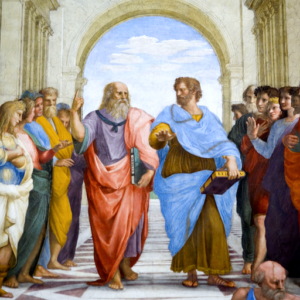
Action matters [t = 0:22:12]
All this is to say that action really matters. It matters, as Guru Rinpoche said, to do everything with care, as fine as grains of flour. To do whatever we do with excellence. We talked in previous weeks about the connection between early Dharma and the Greek philosophy, and this idea of ‘excellence’ is very much related to Aristotle and arête (ἀρετή), which means ‘excellence of any kind’, including moral virtue. In its early appearance in Greek philosophy, it meant the fulfilment of purpose or function – the idea of living up to one’s full potential. We develop this moral virtue or disposition to act with excellence partly as a result of our upbringing, and partly as a result of our habits and our practice. Aristotle argues in the Nicomachean Ethics that character arises from habit – it’s a skill that is acquired through practice, just like learning a musical instrument. And so our everyday practices – what we do in the world and in our day-to-day interactions – are critical, as they the places where we strengthen old habits or create new habits, and this is what becomes our character.
The idea of arête has an interesting connection to an older idea in India, the Vedic concept of rta (Sanskrit: ऋतम् ṛtam), which has a very similar root linguistically. Rta has the meaning of ‘that which is properly or excellently joined; order, rule, truth’. It is the principle of natural order which regulates and coordinates the operation of the universe and everything within it. Later, as post-Vedic thought came to India, it became linked to how we uphold the order of the universe (which is dharma), and then the actions of individuals in relation to those practices (which is karma) and those eventually eclipsed rta in terms of their importance. But many scholars say this idea of rta is one of the most important religious conceptions of the Rig Veda. Indeed you could say that it is the beginning of the history of the Hindu religion.
Rinpoche himself talks about our practice in conventional truth very much in terms of karma and action, in terms of accumulating merit and good karma. Yes, we can think about this in some magical way, in terms of some beyond-worldly storehouse of merit, but we can also think about it more practically in terms of purifying our defilements and getting closer to the view of non-duality.

Outrageousness and self-authorship [t = 0:25:12]
Outrageousness can also be understood as learning to define ourselves or to author ourselves authentically, without reference to the norms of society, or our tribe or social network. It does not mean being a rebel. It doesn’t mean being against society, because being against society is still being in reference to society. It’s going beyond either pro or anti. And it’s not just about going beyond the references of society as a whole. It’s about going beyond the references of any of our tribes – our family, our in-laws, our friends, our work colleagues, our sangha, our political party, whatever.
And this is something we’ve come across before, in the work of Robert Kegan from Harvard. In his work on self-authorship, he talks about the process of how we internalize a view in a way that is very similar to the process of view/meditation/action in the Dharma:
• [reliance on external authority] We start with what Kegan calls a ‘socialized self’, which is much like Rinpoche’s explanation that we are ‘slaves to conventional views’. We rely on external rules. We rely on what external authorities – our tribe, our elders, our parents, our society, our sangha and so on – tell us to do.
• [conflict] At some point we reach stage two, and some kind of conflict emerges. Either we see different external authorities in conflict with each other, or we start to see that our internal values are evolving and we can’t make sense of them in terms of external rules. The demands of our external sources of authority no longer fit. So then we have to figure out how to deal with those conflicts.
• [self-authorship] Then finally at stage three we get to self-authorship. This is where we go beyond external sources of reference and instead develop an internalized source of reference. We define for ourselves what is our value system, what is our view, what is the Espoused Theory that we choose as the basis for our lives.
As we saw in Week 1, this idea of a self-authored approach is also very important when it comes to understanding the teachings of Middle Way and establishing our own view of emptiness – the Espoused Theory that will be the basis for our practice. It is vital that we have our own understanding in order that we can apply the view of the Middle Way in post-meditation – in other words, so that when we are out ‘in the world’ and life situations come up, we know how to handle them. Because we can’t always send an email to our teacher to ask for advice. We need to know what to do in the moment, as situations arise. And that’s only going to be possible if the view of the Middle Way has become internalized as part of our Theory-in-Use.
And that’s only going to happen if we develop our own self-authored view of that world that integrates and incorporates the view of the Middle Way. In other words, we need to build the view of the Middle Way into our own ideas, our own models, our own maps, and our own view to ensure that we can apply the correct Dharma to our life situations. In ensuring that our Dharma practice is authentic, yet again view is so critical.
Putting this all together, we come to a much richer understanding of the Two Truths:
• Ultimate truth: corresponds to self-transcendence in Bhikkhu Bodhi’s words, it’s emptiness, it’s wisdom, it’s ultimate bodhicitta, and in Rinpoche’s words it is outrageousness.
• Conventional truth: corresponds to self-transformation in Bhikkhu Bodhi’s words, it’s purification of defilements and cultivation of compassion and skillful means, it’s relative bodhicitta, and in Rinpoche’s words it is elegance.
As we have said many times, we need both of the Two Truths. If we just aim for self-transformation and elegance without self-transcendence, then it’s just worldly self-help and personal development, there is nothing of the Dharma path there. But if we just attempt self-transcendence without the self-transformation, it’s like trying to scale the cliff without really having the equipment. We’ll end up fooling ourselves, we’ll end up with spiritual materialism, ego, building our castles on a foundation of sand. And a high risk of falling into nihilism. Just as we need both of the Two Truths when we establish the view, we also need both of the Two Truths in our practice. We need ultimate and relative, we need self-transformation and self-transcendence. We need elegance and outrageousness.
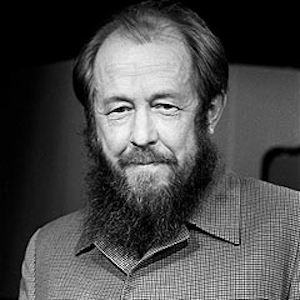
Spiritual bypassing [t = 0:29:17]
This topic of trying to go too far too fast is really important, because this week we are talking about how to practice emptiness and the path of the Middle Way in the world, in our everyday lives. And there’s some lovely recent work that has been done on a topic that people call ‘spiritual bypassing’, which is about what can happen if you don’t deal with the stuff of the conventional world, of your conventional life and your conventional habits. Bo Heimann talks about this in a piece called “Rethinking Mindfulness” in Levekunst:
There’s another challenge that could emerge from meditation without a solid ground. It can, simply put, contribute to self-deception. Excessive detachment-ability. Blind focus on positive thinking. Fear of anger. Artificial kindness. Neglect of own feelings. Difficulty in setting limits. An intellectual intelligence that is far ahead of the emotional and moral intelligences. Focus on the absolute rather than the relative and personal. Is there a bell ringing? Yes, the above is found in quite a few of us. And, I’m afraid, it is quite common in meditation circles.
The term spiritual bypassing was originally coined by psycho-spiritual teacher John Welwood. Robert Masters has in his book of the same name, evolved the concept. He notes soberly that the road away from life’s pain often ends up in a certain form of bypassing-spirituality that keeps us in pain. Quite a few meditators see no need for important psychological work. They want to enjoy the mountaintop view by being hoisted up by a helicopter. […] We end up being unreliable and vulnerable because the view is not deserved and supported from the inside-out, but purchased. We simply have to climb all the way up if we really want to be free, he points out.
There are no shortcuts. […] We tend to seek and love the big breakthrough and the view from the top of the mountain, but not the small steps and the tough psycho-therapeutic work that’s needed to get up there without a helicopter. [And we expect] this journey should of course be almost painless. In this way, the illusory idea of a shortcut ends up a detour, or perhaps even as a cul-de-sac. Unfortunately, the easy shortcut is sold by spiritual second-hand car dealers. And unfortunately we are up for grabs for empty calories, because we would like to believe that we can do it all in half the time.
Yes, there’s an important truth here in the idea that we are unwilling to look inside, and instead we just think that we can go outside. In 1973, Aleksandr Solzhenitsyn made this point beautifully in The Gulag Archipelago:
If only it were all so simple! If only there were evil people somewhere insidiously committing evil deeds, and it were necessary only to separate them from the rest of us and destroy them. But the line dividing good and evil cuts through the heart of every human being. And who is willing to destroy a piece of his own heart?
We will talk about this more, but let’s summarize some points about the relationship between view and practice:
• Realizing the view through our practice: As Rinpoche said, for some our view leads to our practice, although that is very hard. For more of us, our practice is going to lead to our view. In other words we are going to understand and realize the view of non-duality through our practice, not necessarily prior to our practice.
• Outwardly Shravakayana, inwardly Mahayana, secretly Vajrayana: In terms of balancing outrageousness and elegance, Rinpoche has a lovely saying: ‘We should aim to be outwardly Shravakayana, inwardly Mahayana, and secretly Vajrayana’. In other words, outwardly we should be elegant. We should fit in beautifully – and of course elegance in a fine restaurant means something different from elegance when watching a football match. Inwardly we should have this sense of non-duality and emptiness, this outrageousness, this willingness to step outside habit and convention, always in an elegant way. And then secretly, we should have pure perception, which we will come to later.
• Going beyond meditation and post-meditation: Finally as we said last week, our aim is for the distinction between meditation and post-meditation to collapse entirely.

Why post-meditation as practice? [t = 0:33:34]
We talked last week of meditation practice, and now this week we come to post-meditation. Why should we also use that as our practice? There are several reasons.
1) Not fooling oneself: It’s much easier to fool yourself about your practice and how well you are doing when you are sitting alone on your cushion. But when you are talking to or working with other people, when you are trying to be in a romantic or family or professional relationship, all of a sudden the gaps between your theory and your practice become very clear.
2) Cleaning the window: Secondly, as Bhikkhu Bodhi said, self-transcendence is important at the beginning and the end of the path. But in the middle, a lot of the hard work is self-transformation. It is the work of cleaning the dirt from your window. Nothing glamorous. But that’s exactly what we get to do in our ordinary lives.
3) Time: If you think about it, 30 minutes on the cushion means 23½ hours of the day when you’re not on the cushion. Now I know that many of you are following a two hour a day practice commitment, and some of you even more than that. But even that still leaves more than 90% of your day where you are not practicing! Our lives are short. As the teachings say, this is a precious human rebirth, where we have met the Dharma. We have the opportunity to practice. Surely we want to use as much of each 24-hour period as we can? If you are practicing full time, like 8-10 hours/day, as you might do in retreat, you can get to your 10,000 hours in three years. Hence the classic three-year retreat in the Tibetan Buddhist tradition. But it isn’t just a matter of arithmetic. If you are only practicing 30 minutes a day, then to get to 10,000 hours, which is the benchmark for mastery or really internalizing the practice, it is going to take you 55 years. Many of us may not have that long. So we are going to need to use more than just those 30 minutes a day. We are going to want to use as much of the remaining 24 hours as possible as part of our practice.
4) Benefiting others: It’s not just that the 10,000 hours can seem like a long way away, but also every day we are meeting with a lot of people, we are engaging with others in the world. The sooner we can transform our own hearts and minds, the more we can ensure that we are benefiting the people that we meet. And that is our aim as bodhisattvas.
Rinpoche told a lovely story about someone who actually attended one of his three-year retreats, and worked for five years doing a minimum wage job just to save for the flight and the accommodation to be able to participate in the retreat. Rinpoche said that this practice of working at a minimum wage job was creating just as much merit as anything that person did during the retreat itself. I think we should really remember this story, because some of us have the really dualistic idea that we’re only accumulating merit when we are on our cushions. But that’s absolutely not the case – everything we do in our day-to-day lives is just as much an opportunity to accumulate merit, to purify our defilements, to increase our understanding and realization of the view.

Madhyamaka ethics [t = 0:36:59]
Of course practice is key. And since this is our last week together, it’s really important that we focus on practice and inspiration. We’ve got 10,000 hours to accomplish, so why not 20,000 or 30,000 hours? I don’t want to spend too much time on theory, but since this is also a program on Madhyamaka, I would like to say a few words about the philosophy of Buddhist ethics. What does it mean to build an ethic, a theory of morals and ethics around non-self? There is a lot of material on Buddhist ethics in the pre-reading, and I really encourage you to read it.
The main point is that for most of us, our conventional Western ideas of morals and ethics are all based on free will and personal accountability. How can any of this work when there is no truly existing self? Jay Garfield makes a key point here, that action and ethics have to be based on dependent arising, the lack of a truly existing self, and not on the action of a free will bound by laws. Now, for those of us who have grown up in the West, this is very radical. We keep coming back to the notion of free will, we keep coming back to the idea of a self. We have seen it a lot in the Forum discussions, with the questions people ask about these things.
But as we saw in Week 5, we now know that the very idea of free will is already falling apart in the light of the findings of cognitive science. I think it’s quite intriguing that contemporary science might end up shifting Western thinking on morality and ethics – from a perspective that is based on self, to something that is much more aligned with the Buddhist perspective and not centred on a non-existing self. And yes, this applies very much to our politics, to our institutional structures, and to our organizations. For example, what does it mean to design a workplace around the idea of non-self? That’s a huge and fascinating topic, which we are not going to have enough time for this evening. We are going to focus much more on the personal implications, but I’d like to note that the broader social implications are all there as well.
Here’s a passage from the pre-reading that explores how we might begin to think about ethics in the light of non-self, from Garfield (2015) Engaging Buddhism (p.331):
Our identities are negotiated, fluid and complex in virtue of being marked by the three universal characteristics of impermanence, interdependence and the absence of any self. It is this frame of context-governed interpretive appropriation, instead of the frame of autonomous, substantial selfhood that sets metaphysical questions regarding agency, and moral questions regarding responsibility in a Buddhist framework. What is it to act, in a way relevant to moral assessment or reaction? It is for our behaviour to be determined by reasons, by motives we and/or others regard as our own. It is therefore for the causes of our behaviour to be part of the narrative that makes sense of our lives, as opposed to being simply part of the vast uninterpreted milieu in which our lives are led, or bits of the narratives that more properly constitute the lives of others. This distinction is not a metaphysical but a literary distinction, and since this kind of narrative construction is so hermeneutical, how we do so—individually and collectively—is a matter of choice, and sensitive to explanatory purposes. That sensitivity, on the other hand, means that the choice is not arbitrary. We can follow Nietzsche here. For what do we take responsibility and for what are we assigned responsibility? Those acts we interpret—or which others interpret for us—as our own, as constituting part of the basis of imputation of our own identities.
When I propose to jump from a window, for instance, in order avoid living through global warming and the decline of Australian cricket, the conditions that motivate my act are cognitive and emotional states I take to be my own, and which others who know me would regard as mine. The narrative that constructs the conventional self that is the basis of my individuation includes them, simply in virtue of our psychology and social practices. This, then, is, uncontroversially, although merely conventionally, an action, and is a matter of direct moral concern for me and for those around me.
If, on the other hand, you toss me from the window against my will, the causes of my trajectory lie in what we would instead, and uncontroversially, but again, on conventional, hermeneutical grounds, interpret as parts of your biography. This is no action of mine. The agency lies with you, not on metaphysical grounds, but on conventional grounds, not on the discovery of agent causation in your will, not in mine, but based upon the plausible narrative we tell of the event and of each other’s lives as interpretable characters.[45]
[Note 45]: It is important to remember that not all narratives are equally good. Some makes good sense of our lives, or those of others; some are incoherent; some are facile and self-serving; some are profound and revealing. It is possible for people to disagree about whether a particular event is an action or not, or about the attribution of responsibility. It is possible for us to wonder about whether we should feel remorse for a particular situation or not. These questions are in the end, on this account, questions about which narratives make the most sense. While these questions may not always be easy (or even possible to settle), the fact that they arise saves this view from the facile relativism that would issue from the observation that we can always tell some story on which this is an action of mine, and some story on which it is not, and so that there is simply no fact of the matter, and perhaps no importance to the question.
I’m not going to go into any more detail on the theory, but the takeaway for me here is the idea that accountability, agency, personhood, storytelling – all of these things are conventional narrative constructions. As we’ve been saying all of these weeks, the idea of the self is just a narrative we tell ourselves. In that sense you can talk about a selfless person and it can still make complete sense. We can have a conventional construct of personhood, which is completely empty of any truly existing self. I also very much recommend chapters 4 and 5 of Garfield’s book, on what is self and what is consciousness. And in particular he explores questions like what is the minimal conception of self that the Prasangika-Madhyamaka needs in order to actually engage in conventional truth. But enough theory. Let’s turn to practice.

Being honest with ourselves [t = 0:44:04]
Just as a reminder of what Rinpoche said, we should ensure that the core of our practice – and the foundation of our ethics – is being honest with ourselves. As Milarepa sang:
“My religion is not deceiving myself and not disturbing others.”
Here are a couple of quotes on this topic. First, from the character Irving Rosenfeld in the movie American Hustle:
As far as I could see, people were always conning each other to get what they want. We even con ourselves. We talk ourselves into things, you know, we sell ourselves things we maybe don’t even need or want. We’re dressing them up. We leave out the risk. We leave out the ugly truth. We don’t pay attention to that, because we’re all conning ourselves in one way or another, just to get through life.
It’s a lovely quote, and a wonderful basis for a meditation on where in your own life are you not confronting the truth. Is it in your relationships, your practice, your work, or some other aspect of your willingness to be honest about how your life is going?
Next, a quote from George Orwell’s “In Front of Your Nose,” which was published in the London Tribune on 22 March 1946:
The point is that we are all capable of believing things which we know to be untrue, and then, when we are finally proved wrong, impudently twisting the facts so as to show that we were right. Intellectually, it is possible to carry on this process for an indefinite time: the only check on it is that sooner or later a false belief bumps up against solid reality, usually on a battlefield.
I hope none of us gets into the situation where our views need to be refuted on the battlefield! But this goes back to what we talked about in previous weeks, where Rinpoche explained how the teachings are heard by three different kinds of student. Can we hear the truth? Or does it take some crisis in our lives before we are really willing to pay attention?

Work and relationships as a path [t = 0:46:07]
We can use life as a path, and as we’ve said this means using everything that we have in our life as an opportunity for practice. Using work as a path, using relationships as a path. And on that subject, I wanted to quote from Rainer Maria Rilke, Letters to a Young Poet (#7) (Rome 1904):
It is also good to love: because love is difficult. For one human being to love another human being: that is perhaps the most difficult task that has been entrusted to us, the ultimate task, the final test and proof, the work for which all other work is merely preparation. That is why young people, who are beginners in everything, are not yet capable of love: it is something they must learn. With their whole being, with all their forces, gathered around their solitary, anxious, upward-beating heart, they must learn to love. But learning-time is always a long, secluded time, and therefore loving, for a long time ahead and far on into life, is: solitude, a heightened and deepened kind of aloneness for the person who loves. Loving does not at first mean merging, surrendering, and uniting with another person (for what would a union be of two people who are unclarified, unfinished, and still incoherent?), it is a high inducement for the individual to ripen, to become something in himself, to become world, to become world in himself for the sake of another person; it is a great, demanding claim on him, something that chooses him and calls him to vast distances. Only in this sense, as the task of working on themselves (“to hearken and to hammer day and night”), may young people use the love that is given to them. Merging and surrendering and every kind of communion is not for them (who must still, for a long, long time, save and gather themselves); it is the ultimate, is perhaps that for which human lives are as yet barely large enough.
Here’s another quote, from His Holiness the Dalai Lama, on how we might practice throughout our day, and use each day fully:
Every day, think as you wake up, today I am fortunate to be alive, I have a precious human life, I am not going to waste it. I am going to use all my energies to develop myself, to expand my heart out to others; to achieve enlightenment for the benefit of all beings. I am going to have kind thoughts towards others, I am not going to get angry or think badly about others. I am going to benefit others as much as I can.
This is a very practical aspiration, one we can all include in our day. And again, as we said in Week 1, if we are serious about engaging in post-meditation as deliberate practice – the 10,000 hours on the path to mastery – we can’t just be in cruise control. We have to test ourselves. It’s like a military commander would say: you only know your soldiers when they’re tested in the heat of battle. There’s a lovely quote from the martial artist Bruce Lee:
“Under duress, we do not rise to our expectations; we fall to the level of our training”
So how do we use our everyday life to always keep ourselves on the edge of our comfort zones, to always keep pushing into areas of challenge and discomfort? I really invite you to think about how much are you doing that right now in your everyday life – are you using your everyday life as a practice field for deliberate practice of the Middle Way?
And really, whatever your job is, that can be your practice field. The cultivation of worldly wisdom can also be part of our Dharma path – even making better decisions, making better choices, as we all have to make decisions all the time. And it’s not our goal to get things right in the world. We’re trying to renounce the world, to go beyond it – but we can still use the challenge of making decisions as a field of practice, like an artist might try and draw the perfect enso. We can use feedback from situations. We can use feedback from people around us to gauge our progress, to actually practice nonduality. So whatever you do, that is your practice field. As Rinpoche said, just as King Ashoka created probably one of the most conducive environments ever for the study and practice of Dharma, we’re going to need to think of how can we create something like that in the modern world. If we want an enlightened society, we will need Buddhist presidents, Buddhist CEOs, and Buddhist scientists. And if we would like to be a part of that, it’s not just a matter of learning to do our job well for the sake of benefitting others in a worldly way. We also need to learn to see our job as our practice field for cultivating the wisdom of the Middle Way. Even for Aristotle, the idea of practical wisdom or phronēsis (φρόνησις) was all about cultivating skill in worldly action, and this was an important part of the pursuit of the highest wisdom.
The management consulting firm McKinsey & Company, on its 80th anniversary, published a review of everything it had written about strategy, and it concluded that the difference between success and failure in strategy is not about trying to get the strategy right; it’s about not making stupid mistakes. And this is very similar to the way we approach our Dharma path, where progress is a result of elimination, and success is measured in terms of cleaning the dirt from our windows, and purifying our errors of judgment and understanding. Seeing the truth more clearly. And we can apply this same understanding when approaching emptiness in our work and our life – if we’re managers, if we’re strategists, if we’re artists, whatever our worldly profession might be – how can we use our profession as a way of practicing nonduality?
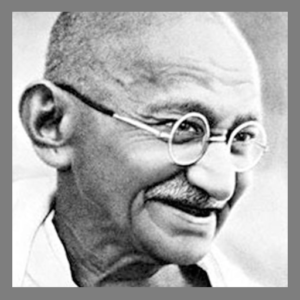
Self-transformation [t = 0:52:23]
In exploring how we might approach post-meditation, I’m going to go through both aspects of the path: self-transformation and then self-transcendence. So we’ll look at the Eightfold Noble Path and the Six Paramitas through both lenses. And we’ll also talk more about how when it comes to practice, Rinpoche made a very strong push that we should think of renunciation, lojong, and mind training. Dharma is not therapy. It’s not to make you happy, but to disrupt you. It is to go against your habits and your ego. It’s not to strengthen your daily life. So just always bear that in mind. When we think about worldly practice, we’re not doing it in order to find worldly happiness or to make our worldly life a success. Of course, Dharma is not against happiness or success either, but these are not our primary concern. Nevertheless, it’s quite possible that our Dharma practice may lead to greater happiness and success. We’re interested in our practice field, so we care that our actions are as fine as flour, just like Guru Rinpoche. So if we are managers, we want to manage well. If we’re artists, we want to paint well. But we’re not doing these things for the sake of worldly outcomes (such as happiness, productivity, stress relief or success), even if these might come. We are engaging in our post-meditation practice in the world for the sake of liberating ourselves and all sentient beings.
We talked in Week 1 about Aristotle’s question “What is the good for the city and the man?”, and there are so many answers throughout the history of philosophy. I came across a lovely example from Gandhi, where he was talking about what he called the seven social sins, which he lists as:
• Wealth without work
• Pleasure without conscience
• Knowledge without character
• Commerce without morality
• Science without humanity
• Worship without sacrifice
• Politics without principle
His commentary on the seven social sins is very succinct:
And naturally, our friend does not want to know these things merely through the intellect, but to know them through the heart, so as to avoid them.
So here he’s really talking about self-transformation. All of the items on his list are very worldly activities, the domain of post-meditation, and he’s asking how can we go about them in a way that will contribute to our spiritual progress? All of these trade-offs are trade-offs of judgment, they’re trade-offs of practical wisdom. So there are no straightforward answers about how to find the right balance or the middle way between extremes. This kind of good judgment comes from our practice.
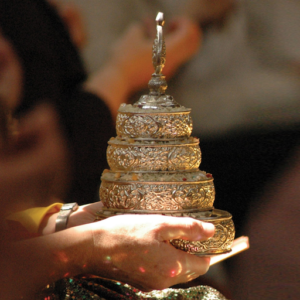
For some, their practice leads to their view [t = 0:54:57]
I mentioned already this idea that Rinpoche said that for some their practice leads to their view, and for some their view leads to their practice. We’ll talk a little more about that. So first: practice leading to view.
We’ve talked about establishing the view, and then practicing it, but that’s difficult. The view is abstract; it’s inconceivable; we can’t understand it; and at the same time we have deep conventional habits of referring to our self, to objects, to the workings of cause and effect, to karma, rebirth, all kinds of things. All the phenomena of the everyday world. So for us, we need to start by loosening our grip on our samsaric habits and wrong views. And this is what is meant by merit. Changing the qualities of our subject, our perceiver. Cleaning the dirt off our window, so we can see more clearly. And we do that through practice.
So to take an example: generosity. Maybe when we start, we don’t feel it at all. It’s a pure chore. We do it because we’re told we have to. Maybe it becomes a habit over time. And then maybe after a while we actually start to feel it, when we give to somebody. And maybe even further down the line we might start to ask what is the idea of giving? Gift? Giver? Receiver? On what basis is wealth and fairness even part of society? What does it mean to give a gift?
If we really engage in generosity as a practice, we will find, over time, that it will start to undo some of our assumptions. We’ll start to question things. And by the way, if you’re giving to a charity, I would strongly suggest don’t make it a monthly direct debit, because you won’t be thinking about it. It’ll be out of your awareness. You won’t be meditating on it. We really want to practice the paramitas. We want to question our framing in terms of subject, object, and action, and go beyond that.
And so this is what is meant when Rinpoche says for some their practice leads to their view. But even though we may not have the view solidly in place yet, we’ve done enough, hopefully, in these eight weeks to understand the importance of not having an extreme view.

The story of Professor George Price [t = 0:57:16]
I’d like to tell the rather sad story of George Price, who was a professor in London. This is an example of what can go wrong when you have an extreme view of generosity, and don’t have the wisdom of nonduality to guide your action. The story may be found in ➜Wikipedia:
Professor George Price developed a new interpretation of Fisher’s fundamental theorem of natural selection, the Price equation, which […] still widely held to be the best mathematical, biological and evolutionary representation of altruism. […]
Price’s ‘mathematical’ theory of altruism reasons that organisms are more likely to show altruism toward each other as they become more genetically similar to each other. As such, in a species that requires two parents to reproduce, an organism is most likely to show altruistic behaviour to a biological parent, full sibling, or direct offspring. The reason for this is that each of these relatives’ genetic make up contains (on average in the case of siblings) 50% of the genes that are found in the original organism. So if the original organism dies as a result of an altruistic act it can still manage to propagate its full genetic heritage as long as two or more of these close relatives are saved. Consequently, an organism is less likely to show altruistic behaviour to a biological grandparent, grandchild, aunt/uncle, niece/nephew or half-sibling (each contain one-fourth of the genes found in the original organism); and even less likely to show altruism to a first cousin (contains one-eighth of the genes found in the original organism). The theory then holds that the further genetically removed two organisms are from each other the less likely they are to show altruism to each other.
If true, then altruistic (kind) behaviour is not truly selfless and is instead an adaptation that organisms have in order to promote their own genetic heritage. Price grew increasingly depressed by the implications of his equation. As part of an attempt to prove his theory right or wrong Price began showing an ever-increasing amount (in both quality and quantity) of random kindness to complete strangers. As such, Price dedicated the latter part of his life to helping the homeless, often inviting homeless people to live in his house. Sometimes, when the people in his house became a distraction, he slept in his office at the Galton Laboratory. He also gave up everything to help alcoholics, yet as he helped them steal his belongings, he increasingly fell into depression.
He was eventually thrown out of his rented house due to a construction project in the area, which made him unhappy because he could no longer provide housing for the homeless. He moved to various squats in the North London area, and became depressed over Christmas, 1974. Unable to prove his theory right or wrong, Price committed suicide on January 6, 1975.
It’s a really sad story, but it’s an example for all of us. If we try to apply generosity or any of the paramitas without an understanding of the view, it’s just going to become extreme.
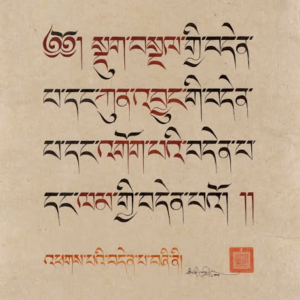
Introduction to the eightfold path [t = 1:00:35]
Let’s start with the eightfold path. As you may know, this can be grouped into three aspects that comprise the trishiksha or the threefold training:
• Prajña (wisdom), which includes right view, and right intention or right thought.
• Shila (ethical conduct), which comprises right speech, right action, and right livelihood.
• Samadhi (mental discipline or meditation), which has three elements: right effort, right mindfulness, and right concentration.
In practice terms, the usual order of practice or cultivation is to begin with shila or ethics, then to develop samadhi and mental discipline, and then finally prajña or wisdom. However, as we’ve spoken about previously, we can also think about the path in terms of view, meditation, and action. So you could also approach the three-fold training as prajña, samadhi, and shila. As Rinpoche says, for some people, practice leads to view; for some, view leads to practice. I want to emphasize that as we listen to the teachings of the eightfold path, even if we consider ourselves to be Mahayana or Vajrayana practitioners, we should never look down on the root yana, the Shravakayana. We can equally use all of these practices as nondual practices. This is our foundation.
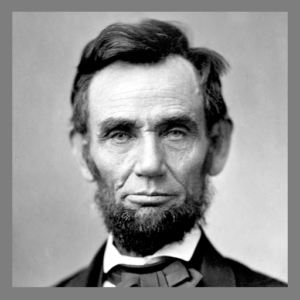
The Shravakayana: The Noble Eightfold Path
1. Right view / right understanding (Samma ditthi) [t = 1:01:56]
We start with ‘right view’ or ‘right understanding’. And here I am taking the description of right view as set out in the book What the Buddha Taught (1974) by Walpola Rahula:
Right Understanding is the understanding of things as they are, and it is the Four Noble Truths that explain things as they really are. Right Understanding therefore is ultimately reduced to the understanding of the Four Noble Truths. This understanding is the highest wisdom which sees the Ultimate Reality.
So that very much makes sense to us as students of the Middle Way. And in the Madhyamaka we would express the Four Noble Truths in terms of emptiness. And as we think about what this might mean in post-meditation, I’d like to offer a nice quote on view, on ultimate and relative, from Steven Spielberg’s movie Lincoln. This is the scene where Thaddeus Stevens, the passionate abolitionist who had no time for slave owning whites, scolds Abraham Lincoln for compromising with them. Lincoln’s goal was total abolition. And he believed passion matched with strategy would get us there. The scene in the movie goes like this:
[Thaddeus Stevens]: You claim you trust them—but you know what the people are. You know that the inner compass that should direct the soul toward justice has ossified in white men and women, North and South, unto utter uselessness through tolerating the evil of slavery. White people cannot bear the thought of sharing this country’s infinite abundance with Negroes.
[Abraham Lincoln]: A compass, I learnt when I was surveying, it’ll point you True North from where you are standing, but it’s got no advice about the swamps and deserts and chasms you’ll encounter along the way. If in pursuit of your destination you plunge ahead, heedless of obstacles, and achieve nothing more than to sink in a swamp, what’s the use of knowing True North? Our virtues become vices when they blind us to the complexity of living. If you are a compass, keep pointing. If you are a map maker, we have work to do. Real progress depends on it. And first, we must understand the landscape. Sometimes, to cross the river, you have to backtrack. But by God we’ll cross it.
This is a lovely expression of the Two Truths. Yes, we know that right view is emptiness in the ultimate truth (the compass pointing to True North), but we also know that this does not in any sense mean we should despise the complexity of the conventional truth (and the need for a map to help us navigate the swamps and deserts and chasms). We need both compass and map.
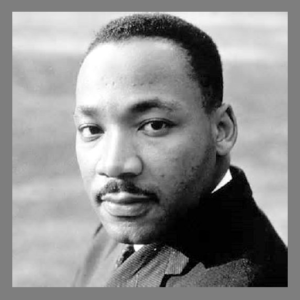
2. Right intention / right thought (Samma sankappa) [t = 1:04:14]
Next, Walpola Rahula on right intention, once again from What the Buddha Taught (1974):
Right Thought / Right Intention denotes the thoughts of selfless renunciation or detachment, thoughts of love and thoughts of non-violence, which are extended to all beings. It is very interesting and important to note here that thoughts of selfless detachment, love and non-violence are grouped on the side of wisdom. This clearly shows that true wisdom is endowed with these noble qualities, and that all thoughts of selfish desire, ill-will, hatred and violence are the result of a lack of wisdom — in all spheres of life whether individual, social, or political.
This is a profoundly important question: how do we cultivate the right intention? We have already encountered the aspiration practices of the Four Immeasurables (love, compassion, joy and equanimity) that are part of the training in relative bodhicitta. However, the idea that love is on the side of wisdom is found in almost all spiritual traditions. There’s a lovely quote from Martin Luther King Jr. on “Loving Your Enemies”, which is obviously in a Christian context, though I would encourage you to focus on the nondual meaning. He says,
The meaning of love is not to be confused with some sentimental outpouring. Love is something much deeper than emotional bosh. Perhaps the Greek language can clear our confusion at this point. In the Greek New Testament are three words for love. The word eros is sort of aesthetic or romantic love. In the Platonic dialogues eros is the yearning of the soul for the realm of the divine. The second word is philia, a reciprocal of love and the intimate affection and friendship between friends. We love those whom we like, and we love because we are loved. The third word is agape, understanding and creative, redemptive goodwill for all men. An overflowing love which seeks nothing in return, agape is the love of God operating in the human heart. At this level, we love men not because we like them, nor because they possess some type of divine spark; we love every man because God loves him. At this level, we love the person who does an evil deed, although we hate the deed that he does.
Now we can see what Jesus meant when he said, ‘Love your enemies.’ We should be happy that he did not say, ‘Like your enemies.’ It is almost impossible to like some people. ‘Like’ is a sentimental and affectionate word. How can we be affectionate toward a person whose avowed aim is to crush our very being and place innumerable stumbling blocks in our path? How can we like a person who is threatening our children and bombing our homes? This is impossible. But Jesus recognized that love is greater than like.
We might not use that language exactly, but I think this is a wonderful example of the idea of common humanity that we’re cultivating as we practice bodhicitta. This is the equanimity of wanting to see – and to treat – all sentient beings the same way as we extend our love, our compassion, our joy, and our equanimity. And as we saw in previous weeks, this is also an emptiness practice. So notice for yourself – can you love all people equally, as Martin Luther King sets out, or not? And if you cannot, then you can invest in the path of self-transformation to transform whatever defilements are stopping you from seeing them in that way. And as with all elements of the eightfold path, this is a meditation practice – but it is also a post-meditation practice, as our daily lives give us countless opportunities to practice right intention.

3. Right speech (Samma vaca) [t = 1:07:21]
Here is Walpola Rahula on right speech:
Right Speech means abstention (1) from telling lies, (2) from backbiting and slander and talk that may bring about hatred, enmity, disunity and disharmony among individuals or groups of people, (3) from harsh, rude, impolite, malicious and abusive language, and (4) from idle, useless and foolish babble and gossip. When one abstains from these forms of wrong and harmful speech one naturally has to speak the truth, has to use words that are friendly and benevolent, pleasant and gentle, meaningful and useful. One should not speak carelessly: speech should be at the right time and place. If one cannot say something useful, one should keep ‘noble silence’.
For most of us, our worldly lives are lived in the realm of communication, whether written or verbal, so once again we have many opportunities each day to cultivate awareness and practice right speech. For example, we might choose to notice how are we reactive? In what ways does our communicate arise from a desire to manipulate others? To be liked? To be popular? To get ahead? How are we manifesting the eight worldly dharmas in our communication? Once again, this offers another perfect opportunity for emptiness practice in post-meditation, just to really hold ourselves to account.

Conflict and nonduality [t = 1:08:36]
Working with conflict is not explicitly part of the eightfold noble path, but here we could also, in parentheses, talk a little bit about conflict, because conflict is endemic in samsara – in relationships, in work, in politics. And if you think about it, conflict is the ultimate expression of duality, and working with the conflict in our lives is an excellent practice of nonduality. Conflict arises when we reify the world into self and other, when we create solid boundaries with different interests, even when it’s a boundary between two parts of ourselves. As we saw in Week 7, we are prone to hesitation and doubt, and that is typically due to inner conflict – for example, between our habitual instincts and our desire to practice the Dharma. And in the end, all conflict comes down to incorrect or incomplete dualistic maps of the world.
We have also talked about how do we bring the Dharma to the West. How might we understand the relationship between Dharma and science, or Dharma and western philosophy, or Dharma and the understanding of mind and consciousness? Many of us may see conflicts there. Again, we are imposing our dualistic frames onto the world. How can we work with that? Another ubiquitous manifestation of conflict is change. For example, as practitioners we seek to change from the current version of ourselves to the desired future version of ourselves. Even as bodhisattvas on the path, any change involves conflict.
Working with conflict, then, is a practice of nonduality. And there’s a lot more we could say that goes beyond the scope of what we’re going to cover tonight, but let’s briefly go back to what Rinpoche said about elegance and outrageousness. As we saw, outrageousness means going beyond our habitual, socialized, tribal self:
[win/lose]: As we learned from Bob Kegan at Harvard, when we’re operating from the socialized self, we’re fixed to the views of our tribe or our family or our society or whatever, and so conflict becomes hardened. It becomes win/lose. We can’t go against our loyalty to our tribe, or loyalty to our ideas and our positions.
[win/win]: But once we go to a self-authoring self, which corresponds to what Rinpoche calls “outrageous”, we can then have find win-win outcomes, because now we are flexible. We can self-author, so we can change our views. Our views are not determined in terms of loyalty to our tribe.
[letting the conflict transform us]: And then of course, finally, we transcend all views – the self-transcendence that we’ve already talked of. We go beyond even self-authorship to self-transcendence; and now, it is nondual. It’s not about a win-win anymore; it’s not about resolving a conflict. It’s about letting the conflict transform us, using it as a resource to become aware of our own defilements. So that is conflict as nondual practice.
Mastering conflict is just as in the rest of our emptiness practice. We learn to understand our wrong views, our incomplete maps, our bad assumptions, and our internal conflicts. We become aware when we are in over our heads, when we have opposing or conflicting rules that we cannot make sense of, an incomplete map internally. And so we ask ourselves: can we learn to listen, rather than react? Can we learn to find wisdom in our opponent’s position? Rather than assume that we know what’s right, how can we learn to look for the truth? To deliberately question? To approach a conflict with beginner’s mind? And of course it’s hard, because usually in a conflict, we’re emotionally triggered. We become defensive. We withdraw into ourselves. We’re less likely to extend ourselves to our opponent. So how can we regain our centre and reconnect with our bodhisattva aspiration? It’s such an important practice.
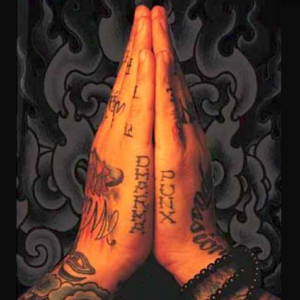
4. Right morality / right discipline / right action (Samma kammanta) [t = 1:12:21]
Here is Walpola Rahula on right discipline or right action:
Right Action aims at promoting moral, honourable and peaceful conduct. It admonishes us that we should abstain from (1) destroying life, (2) from stealing, from (3) dishonest dealings (lying), from (4) illegitimate sexual intercourse, and that (5) we should also help others to lead a peaceful and honourable life in the right way.
Traditionally, we think of discipline and morality in terms of the five vows of abstaining from harming living beings, stealing, sexual misconduct, lying, and intoxication. One important way we can bring our view of emptiness to our practice of discipline is, as we saw in Chapter 2 of Madhyamakavatara, by not becoming puritanical. Not thinking we are superior in terms of our morality, our ethics, or our Dharma. Not thinking that our understanding is better or that our practice is better. And as we mentioned earlier, Rinpoche is talking a lot nowadays about “bad Buddhists” – people who don’t necessarily hold to all of the five vows – just ordinary householders. Instead of judging them for their supposedly inferior discipline, how might we ensure that we do not exclude them from the Buddha’s wisdom and compassion? Once again, this is an opportunity to watch ourselves. When we think about our discipline, is it becoming something tribal, something self-referential, something exclusionary? Or is it a genuine practice by which we aspire to benefit others?

5. Right livelihood (Samma ajiva) [t = 1:13:44]
Here is Walpola Rahula on right livelihood:
Right Livelihood means that one should abstain from making one’s living through a profession that brings harm to others, such as trading in arms and lethal weapons, intoxicating drinks, poisons, killing animals, cheating, etc., and should live by a profession which is honourable, blameless and innocent of harm to others. One can clearly see here that Buddhism is strongly opposed to any kind of war, when it lays down that trade in arms and lethal weapons is an evil and unjust means of livelihood.
So how might that relate to emptiness? Well, Rinpoche talks a lot about not getting caught up in the rat race, in fame and fortune, in worldly success. He has talked about one of the best jobs as being a plumber. How many of us would really embrace that? I’m pretty sure that’s why he chose that example. We have all these glorious ideas of success or inspiration or passion or fulfilment – all these samsaric delusions. I think the other way we can think about it is in terms of interdependence, looking at our roles as producers and consumers, looking at the products we buy, looking at the impacts of our actions, their upstream and downstream consequences. What are the social impacts? What are the environmental impacts of how we live? Of what we buy? We can choose to take this very seriously, as part of a practice of emptiness. Why not?

6. Right effort (Samma vayama) [t = 1:15:05]
Here is Walpola Rahula on right effort:
Right Effort is the energetic will (1) to prevent evil and unwholesome states of mind from arising, and (2) to get rid of such evil and unwholesome states that have already arisen within a man, and also (3) to produce, to cause to arise, good and wholesome states of mind not yet arisen, and (4) to develop and bring to perfection the good and wholesome states of mind already present in a man.
This is self-explanatory. Perhaps it may serve as a reminder if we start to think of our practice of emptiness in passive, disengaged or nihilistic terms. Far from it: it is active and energetic.
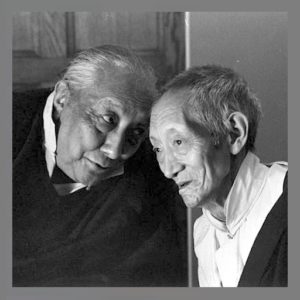
7. Right mindfulness / right attentiveness (Samma sati) [t = 1:15:31]
Here is Walpola Rahula on right mindfulness:
Right Mindfulness (or Attentiveness) is to be diligently aware, mindful and attentive with regard to (1) the activities of the body (kaya), (2) sensations or feelings (vedana), (3) the activities of the mind (citta) and (4) ideas, thoughts, conceptions and things (dhamma).
These are the four foundations of mindfulness, which we have also talked about in previous weeks. And this is very much a core emptiness practice. First, learning to see all phenomena as impermanent, and eventually seeing them all as empty and without inherent existence. Seeing all our narratives and views as empty, including the view of emptiness itself – we already talked about the emptiness of emptiness in Week 6. As we cultivate right mindfulness, we realize that none of these four kinds of objects of mindfulness, none of the skandhas, are “me” or “self”. And so if we do this properly, mindfulness becomes an experiential way to establish the lack of true existence of the person. Just as we can establish the view intellectually through the study of the Madhyamaka, we can establish the view experientially through the practice of right mindfulness.
And as we’ve said in previous weeks, this approach to the practice of mindfulness as an experiential introduction to the view of emptiness is very different from how mindfulness is currently taught in the West, where it’s all about solidifying the self and worldly ambition. Most contemporary mindfulness teachings are marketed with the claim that this practice will make us more successful, more productive, less stressed, more happy and so on. If we practice mindfulness in this way, it will merely entangle us more deeply in samsara and the eight worldly dharmas. As with the other elements of the path, our intention determines everything.
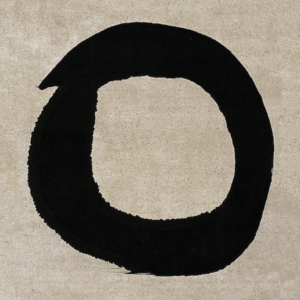
8. Right samadhi / right concentration (Samma samadhi) [t = 1:16:50]
Here is Walpola Rahula on right samadhi or right concentration:
The third and last factor of Mental Discipline is Right Concentration leading to the four stages of Dhyana, generally called trance or recueillement.
(1) In the first stage of Dhyana, passionate desires and certain unwholesome thoughts like sensuous lust, ill-will, languor, worry, restlessness, and sceptical doubt are discarded, and feelings of joy and happiness are maintained, along with certain mental activities.
It’s just worth pointing out that mental discipline leads directly to the removal of unwholesome mental states and defilements. I know some of us in recent weeks have talked about skepticism as being a positive quality that we westerners like to believe we possess. But we now know that according to the teachings, if we’re actually practicing correctly, then even when we reach the first of the four stages of dhyanas, our skepticism and negativity will go. This is another helpful indicator of our progress on the path of practice. Rahula continues:
(2) In the second stage, all intellectual activities are suppressed; tranquillity and ‘one-pointedness’ of mind developed, and the feelings of joy and happiness are still retained.
(3) In the third stage, the feeling of joy, which is an active sensation, also disappears, while the disposition of happiness still remains in addition to mindful equanimity.
(4) In the fourth stage of Dhyana, all sensations, even of happiness and unhappiness, of joy and sorrow, disappear, only pure equanimity and awareness remaining.
So here we can see that even in the Shravakayana, our practice is very much oriented towards the idea of equanimity and awareness, which is also central to the Heart Sutra. As we know from our discussion of the Heart Sutra in Week 6, form is emptiness and emptiness is form. And likewise, awareness is emptiness and emptiness is awareness. This is the truth, the nature of phenomena, the nature of mind. And since the aim of our practice is to realize the truth, to familiarize ourselves with the truth, we understand that our practice is about the cultivation – or perhaps it would be better to say realization – of the qualities of emptiness and awareness. Or using the Shravakayana language, we can say equanimity and awareness. And so it goes without saying that right concentration is also very much an emptiness practice. I think for many of us we’re very attached to our emotions and our practice experiences, especially so-called positive experiences like joy or happiness, or insight, or visions of the Buddha and so on. But all this has to go. And to the extent that we are either attached to these positive emotions and meditation experiences, or even actively seeking to reproduce or strengthen them, this is an obstacle for our practice. As Rinpoche said, our practice is not for happiness.
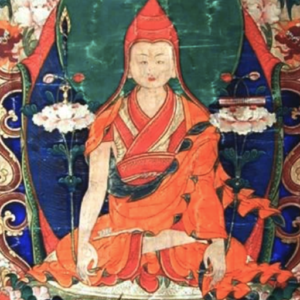
Advice on post-meditation practice [t = 1:19:02]
Many of you wrote to me and asked, is there some practice advice for how we can approach post-meditation and specific worldly activities? There’s a short teaching from Rinpoche which might help here, called “Applying the Three Supreme Methods“, which are sometimes called “good in the beginning, good in the middle, and good in the end”:
Applying the Three Supreme Methods
Dzongsar Khyentse Rinpoche
If one approaches an offering of service with basic good intention, then one accumulates merit, but when three wholesome attitudes known as the Three Supreme Methods are genuinely applied, an outwardly mundane task can even become a paramita.
(1) Intention
To apply the Supreme Methods, begin by refining your intention, thinking you will perform the work for the sake of all sentient beings. Remember you are not making an offering of service to boost your self-gratification, recognition, or mileage points. As Shantideva said, look upon yourself as a utensil and think: I have offered my body to the Buddha, Dharma, and Sangha.
May I be a guard for those who are protectorless,
A guide for those who journey on the road.
For those who wish to go across the water
May I be a boat, a raft, a bridge.
Since it is going to be very difficult to remember to apply the three wholesome attitudes with every page you photocopy or every stroke of the scrub brush, before beginning a day of volunteer work, students should recite the following prayer:Even the remembrance of your name dispels the hope and fear of nirvana and samsara.
From now until attaining enlightenment, I take refuge in the Buddha, Dharma, and Sangha.
Following all the bodhisattvas of past, present, and future, may I emulate their infinite activity to free beings from suffering.
Eventually may I manage to surrender everything I have – my time, my space, my belongings, and even my very limbs – for the sake of all beings.
In that aim, I shall begin by sacrificing my energy and time today to . . . (insert whatever the task is – copying, cleaning the teaching hall, shovelling snow).
(2) Emptiness
To apply the second wholesome attitude, avoid the pride that shadows your good intention. Remember that the work and its accomplishment is an illusion. If you can maintain this attitude throughout your task it is ideal, but most likely you will forget. So immediately after reciting the prayer above, you should reflect in this way:
Whatever I do today is ultimately just a concept. Relatively, there is a necessary structure just as there is in dreams. Though when dreaming there is no true direction, when I dream of falling I fall down towards the earth, not up towards the sky. Ultimately, the direction makes no difference – since I never fell – but in the relative world of the dream, the construct of “the way to fall” is still needed. So I shall do my job as properly as possible.
If we reflect in the way Rinpoche suggests, we can maintain the view of emptiness during our activity. Ultimately we work with a vast nondual view, while relatiely we are precise and careful. This is the same as we have talked about previously, with Guru Rinpoche saying that our actions and respect for cause and effect should be as fine as grains of flour. Rinpoche concludes this practice with a dedication, which is from Shantideva’s Bodhicharyavatara, Chapter 10 verse 55:
(3) Dedication
And now as long as space endures,
As long as there are beings to be found,
May I continue likewise to remain
To drive away the sorrows of the world.
Ideally, you will do this when you finish your work, but since you may forget, the merit can be offered at the beginning by thinking:
I will dedicate whatever virtue results from my actions to all sentient beings.
So once again, you can see how even in our ordinary work, we can go beyond just doing the work itself to seeing the work a Dharma practice, and thus as a paramita. We can bring the view of emptiness, the idea of illusion, the dream-like manifestation, into the work itself. And just in passing – I know we’ve said this before, I just want to say it again – let’s keep in mind that the path is about removing defilements. It’s about cleaning our window. There’s a quote from Antoine de Saint-Exupéry that beautifully captures this, from Terre des Hommes:
“Perfection is attained not when there is no longer anything to add but when there is no longer anything to take away”.
That’s a lovely reminder and also a nice introduction to the six paramitas, to which we turn next.
The Mahayana: The Six Paramitas

Review of the six paramitas [t = 1:22:57]
Now we going to talk about the Mahayana – the grand intention, the grand path – so it would be auspicious to remind ourselves of our bodhisattva aspiration. I’d like to offer a lovely quote from George Bernard Shaw, from Man and Superman, the epistle dedicatory to the play:
This is the true joy in life, the being used for a purpose recognized by yourself as a mighty one; the being a force of nature instead of a feverish selfish little clod of ailments and grievances complaining that the world will not devote itself to making you happy. I am of the opinion that my life belongs to the whole community and as long as I live it is my privilege to do for it whatever I can. I want to be thoroughly used up when I die, for the harder I work the more I live. I rejoice in life for its own sake. Life is no “brief candle” to me. It is a sort of splendid torch which I have got hold of for the moment, and I want to make it burn as brightly as possible before handing it on to future generations.
I love that. It could be a Dharma teaching. Beautiful. And completely different, but also from someone who is known for their very grand intentions, here’s the entrepreneur Elon Musk:
If something is important enough, even if the odds are against you, you should still do it.
As Rinpoche has said, the notion of enlightening all sentient beings seems inconceivable. It seems impossible. But it’s the most important thing there is to do. So we should still do it.
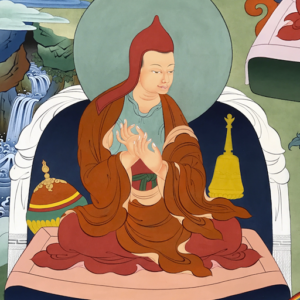
Emptiness and the six paramitas [t = 1:25:16]
We’ve been through the six paramitas in the first six chapters of the Madhyamakavatara. Just to review: generosity is the first, then discipline, the third is patience, the fourth is diligence, the fifth is concentration, and finally, wisdom. I strongly recommend you read Chapter Two of The Words of My Perfect Teacher, which is on “Arousing bodhicitta”. It gives a really excellent overview, especially on the link between relative bodhicitta and ultimate bodhicitta, in other words between the practice of paramitas in the world and emptiness. Here is the section on the transition from relative bodhicitta to ultimate bodhicitta, and on how the view informs practice (from pages 255-256):
Drom Tönpa once asked Atisha what was the ultimate of all teachings. “Of all teachings, the ultimate is emptiness of which compassion is the very essence,” replied the Master. “It is like a very powerful medicine, a panacea which can cure every disease in the world. And just like that very powerful medicine, realization of the truth of emptiness, the nature of reality, is the remedy for all the different negative emotions.”
“Why is it, then,” Drom Tönpa went on, “that so many people who claim to have realized emptiness have no less attachment and hatred?” “Because their realization is only words,” Atisha replied. “Had they really grasped the true meaning of emptiness, their thoughts, words and deeds would be as soft as stepping on cotton wool or as tsampa soup laced with butter. The Master Aryadeva said that even to wonder whether or not all things were empty by nature would make samsara fall apart. True realization of emptiness, therefore, is the ultimate panacea which includes all the elements of the path.”
“How can every element of the path be included within the realization of emptiness?” Drom Tönpa asked. “All the elements of the path are contained in the six transcendent perfections. Now, if you truly realize emptiness, you become free from attachment. As you feel no craving, grasping or desire for anything within or without, you always have transcendent generosity. Being free from grasping and attachment, you are never defiled by negative actions, so You always have transcendent discipline. Without any concepts of ‘I’ and ‘mine’ you have no anger, so you always have transcendent patience. Your mind made truly joyful by the realization of emptiness, you always have transcendent diligence. Being free from distraction, which comes from grasping at things as solid, you always have transcendent concentration. As you do not conceptualize anything whatsoever in terms of subject, object and action, you always have transcendent wisdom.”
“Do those who have realized the truth become Buddhas simply through the view of emptiness and meditation?” Drom Tönpa asked. “Of all that we perceive as forms and sounds there is nothing that does not arise from the mind. To realize that the mind is awareness indivisible from emptiness is the view. Keeping this realization in mind at all times, and never being distracted from it, is meditation. To practise the two accumulations as a magical illusion from within that state is action. If you make a living experience of this practice, it will continue in your dreams. If it comes in the dream state, it will come at the moment of death. And if it comes at the moment of death it will come in the intermediate state. If it is present in the intermediate state you may be certain of attaining supreme accomplishment.”
The eighty-four thousand doors to the Dharma that the Conqueror taught are thus all skilful means to cause the bodhicitta-emptiness of which compassion is the very essence to arise in us.
I love that beautiful connection between our actions in the world – our practice of the six paramitas and the eightfold path – and emptiness. So with that, then, we transition from the more relative path of self-transformation, to the path of self-transcendence, the result path.
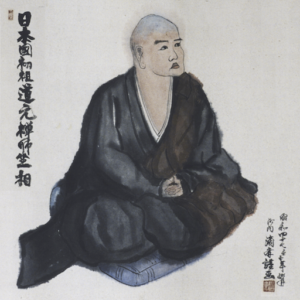
Self-transcendence [t = 1:29:47]
As we’ve seen, we can already start to practice emptiness in the path of self-transformation . We can apply the Three Supreme Methods as we’ve just discussed. We can start to visualize our actions as illusory, as magical. We can start to break down the solidity of subject, object, and action. On this topic, I strongly commend to you a new translation of the Vimalakirti Sutra by Robert Thurman with a wonderful introduction by Rinpoche, which is available free on the Khyentse Foundation website. It contains many nondual teachings, and as Rinpoche emphasizes in the introduction, even the goal of our Dharma practice is illusory (page 29):
If you have a goal, if your aim is to benefit or to achieve a result or a reward, you lack true renunciation and therefore your activity is not genuine Dharma practice. That is not to say that being a monk, like Rahula, was an aimless, fruitless, or meaningless existence; the point here is that ‘aimlessness’ is the aim. Basically, if you don’t realize that the goal of your practice is an illusion – if you think it’s real – and if your aspirations and actions in pursuit of that goal are based on a wrong view, whatever you do is not genuine Dharma practice.
That’s really clear. Really strong. Yes, it’s important for all of us to have aspiration in the relative truth, but we should always remind ourselves that if we have any truly existing goals, then our path is no longer the Dharma path. So that’s a very tough standard to hold ourselves against, although I think it’s an excellent test. And there are also other ways we can assess the extent to which we’re really internalizing emptiness and realizing the view. We’ve talked of some of these before, for example, to what extent are we able to transcend the eight worldly dharmas?
• Hope for happiness / Fear of suffering,
• Hope for fame / Fear of insignificance,
• Hope for praise / Fear of blame,
• Hope for gain / Fear of loss.
We introduced those in Week 1, and hopefully by now you have a much better understanding of what it might mean to really apply the view of nonduality when these thoughts and emotions come up in your mind. Not just to fall prey to automatic, habitual samsaric actions that are driven by these eight worldly dharmas.
As we saw last week, another way of testing our practice is by examining our equanimity. Do we have equanimity and preferencelessness when it comes to the paramitas? When it comes to the four immeasurables? And here we’re not just talking about equanimity towards people – not just treating all people equally – but also equanimity in the realm of ideas. Are we open to new ideas and unfamiliar perspectives? Do we have beginner’s mind?
Another way we can assess our progress is in the extent to which we can turn towards difficulties in our life – difficult people, challenging ideas, challenging emotions, and so on. Do our hearts and minds stay open in the face of difficulty, challenge and discomfort? Are we able to maintain our generosity and open-heartedness? Do we have patience? Fearlessness? It’s very hard to do our “horse” practice in a meaningful way unless we’ve made some genuine progress here.
Moving on to self-transcendence, here is a classic quote from Dōgen’s Genjōkōan (現成公按):
To study the Way is to study the self.
To study the self is to forget the self.
To forget the self is to be enlightened by all things of the universe.
To be enlightened by all things of the universe is to cast off the body and mind of the self as well as those of others.
Even the traces of enlightenment are wiped out, and life with traceless enlightenment goes on forever and ever.
Now we’re getting quite high with these nondual views of self-transcendence. So I’d really like to make sure that our feet are on the ground. When Rinpoche taught the Madhyamaka, he spent a lot of time teaching lojong, mind training, and renunciation. I didn’t really emphasize these topics very much during the previous weeks of this program, but traditionally these are always taught alongside emptiness, so that we don’t forget the conventional truth and we don’t lose our grounding, because it’s so easy to get caught up in this very inspirational nondual language. But as we said at the beginning, if we lose touch with the conventional truth and the path of compassion and self-transformation, then we’ll end up falling prey to spiritual bypassing and spiritual materialism, and we’ll just end up fooling ourselves. It’ll just be an ego trip.

Renunciation and mind-training [t = 1:33:47]
With this intention in mind, I’d like to offer some of Rinpoche’s words on renunciation and mind-training. First from the book Not For Happiness (2012):
Dharma is not a therapy – It is such a mistake to assume that practising Dharma will help us calm down and lead an untroubled life; nothing could be farther from the truth. Dharma is not a therapy. Quite the opposite, in fact, Dharma is tailored specifically to turn your life upside down—it’s what you sign up for.
In the past Rinpoche said the ideal path is 20 years of Shravakayana practice, then 10 years of Mahayana, and only then would one try to tackle the Vajrayana path. If our Vajrayana practice is not based on a solid Mahayana foundation of compassion and bodhicitta, and if our Mahayana practice in turn is not based on a solid Shravakayana foundation of renunciation of the eight worldly dharmas and the pursuits of samsara, then our Vajrayana practice will be fragile and unstable at best. Likewise, we really need the view of renunciation to be so much a part of our blood that when we talk about things like Buddhist presidents and Buddhist CEOs and all the rest, there’s no trace left of worldly ambition. The concern is that for too many of us, we haven’t really accomplished renunciation. So when we talk about practicing Dharma in the world, in post-meditation, there’s always that danger that our Dharma will be subverted by our ego. And then like so much of contemporary mindfulness, our path will just become about success and power and happiness and all the rest.
Next from Rinpoche’s teaching on Nagarjuna’s Letter to a Friend in Chanteloube, France (2010):
If any Dharma activity, including hearing the Dharma, becomes useful to your worldly life, then that’s not good. Ideally, whatever Dharma activity you engage with, in one way or another must become a hindrance to this worldly life.
Another from Not For Happiness:
Once you understand that real Dharma practice is not just about formal sitting meditation, but a never-ending confrontation with and opposition to pride and ego, as well as a lesson in how to accept change, you will be able to start practising right away. For example, imagine you are sitting on a beach admiring the sunset. Nothing terrible has happened and you are content, even happy. Then suddenly that little bell starts to ring in your head, reminding you that this could be the last sunset you ever see. You realize that, were you to die, you might not be reborn with the ability to appreciate a sunset, let alone the capacity to understand what a sunset is, and this thought alone helps you focus your mind on practice.
And once again from Not For Happiness:
The aim of far too many teachings these days is to make people “feel good,” and even some Buddhist masters are beginning to sound like New Age apostles. Their talks are entirely devoted to validating the manifestation of ego and endorsing the “rightness” of our feelings, neither of which have anything to do with the teachings we find in the pith instructions. So, if you are only concerned about feeling good, you are far better off having a full body massage or listening to some uplifting or life-affirming music than receiving Dharma teachings, which were definitely not designed to cheer you up. On the contrary, the Dharma was devised specifically to expose your failings and make you feel awful.
Please bear that in mind as we go forwards. Of course, we know by now that Rinpoche is not suggesting that we should be aspiring to a nihilistic or depressed state of unhappiness, but rather our aim should be transcend the dualism of happiness and unhappiness completely. But we must always remind ourselves of the renunciation teachings, so that we don’t fall into the trap of using our Dharma practice to improve our samsara.
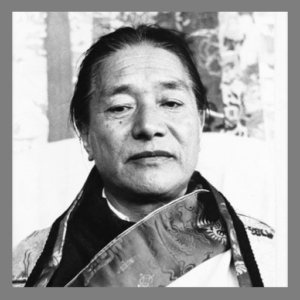
The Madhyamaka spirit [t = 1:38:02]
Let’s switch completely and talk a little bit more about how we might understand the nondual ethic, the Madhyamaka ethic. Let’s go back to where we started, with the 10th Bull:
Barefooted and naked of breast, I mingle with the people of the world.
My clothes are ragged and dust-laden, and I am ever blissful.
I use no magic to extend my life;
Now, before me, the dead trees become alive.
And from Nagarjuna:
For those who can accept emptiness, everything is acceptable.
And finally, from His Holiness Dudjom Rinpoche’s “Calling the Lama from Afar”:
Joyful in all action, the Dzogchen yogi, happy in any company.
These three taken together really sum up the spirit or ethic of the nondual Madhyamaka path, which is the Dzogchen ethic: Joyful in all action, happy in any company. And immediately you can see the qualities of preferenceless, equality, equanimity, turning towards, and acceptance. The Dzogchen yogi is no longer caught up with worldly outcomes such as health, wealth, success, happiness, and all the rest. But nor is this some kind of final resolution. As Rinpoche said in What Makes You Not A Buddhist:
Subconsciously we are lured by the expectation that we will reach a stage where we don’t have to fix anything ever again. One day we will reach “happily ever after.” We are convinced of the notion of “resolution.” It’s as if everything that we’ve experienced up until now, our whole lives to this moment, was a dress rehearsal. We believe our grand performance is yet to come, so we do not live for today.
The state of the Dzogchen yogi sounds very attractive, but once again we need to test ourselves with all of this. We should aspire towards it, but we must be honest. As Milarepa said, “My path is not deceiving myself”. Are we really ready to renounce worldly outcomes, or are we still hoping the Dharma will bring us worldly happiness and success? As we have said already, it’s not that Dharma is opposed to worldly happiness and success – far from it. We would hardly be practicing equanimity and preferencelessness if that were the case. However, especially at the beginning of our path, if we aren’t diligent about taming our habitual patterns and desire for worldly happiness and success, we will always fall back onto our current samsaric habits, and our Dharma path will never take root. So what kind of role-model is the Dzogchen yogi?
Rinpoche often teaches the ideal of the heruka, the wanderer. He says that if we really seek to embody this ideal, we should practice outer, inner, and secret wandering. We should go beyond our stuckness to lifestyle or home; beyond stuckness to concepts, self-narratives and emotions; even beyond stuckness in the realm of awareness itself. Nothing should be stuck or settled. In Rinpoche’s introduction to the Vimalakirti Sutra, he said:
The only way you can find the truth is by constantly having the rug pulled out from under your feet, and that means there’s no time for settling.
As we hear this, once again we can really watch ourselves and notice our thoughts and emotions. How many of us are busy spending our samsaric life building comfortable little nests for ourselves? A nest in our relationships, a nest in our home, a nest in our workplace – somewhere padded and comfortable? This desire for a resting place is the exact opposite of what we should be aspiring for as the heruka, as the wanderer. This is very challenging. How many of us are really ready for that?
The Noble Eightfold Path: A Nondual Perspective

1. Right view / right understanding (Samma ditthi) [t = 1:41:17]
So we have just gone through a Shravakayana presentation of the Eightfold Noble Path in Walpola Rahula’s “What the Buddha Taught” and now I’m going to turn to Chögyam Trungpa Rinpoche’s presentation of the Eightfold Noble Path in The Myth of Freedom (1976). This is a beautiful book with so many pith instructions. I’m just going to pick out a few sections, but I really encourage you to read the whole book. Dzongsar Khyentse Rinpoche says he considers it a terma, a revealed treasure.
With that in mind, here is Trungpa Rinpoche on right view, Samma ditthi. We actually talked about this in Week 6, but I’ll go through it again:
The first point the Buddha made has to do with “right view.” Wrong view is a matter of conceptualization. Someone is walking toward us – suddenly we freeze. Not only do we freeze ourselves, but we also freeze the space in which the person is walking toward us. We call him “friend” who is walking through this space or “enemy.” Thus the person is automatically walking through a frozen situation of fixed ideas – “this is that,” or “this is not that.” This is what Buddha called “wrong view.” It is a conceptualized view which is imperfect because we do not see the situation as it is. There is the possibility, on the other hand, of not freezing that space. The person could walk into a lubricated situation of myself and that person as we are. Such a lubricated situation can exist and can create open space.
Of course, openness could be appropriated as a philosophical concept as well, but the philosophy need not necessarily be fixed. The situation could be seen without the idea of lubrication as such, without any fixed idea. In other words, the philosophical attitude could be just to see the situation as it is. “That person walking toward me is not a friend, therefore he is not an enemy either. He is just a: person approaching me. I don’t have to pre-judge him at all.” That is what is called “right view.”
We’ve been talking about this during all the previous weeks of the program. It’s very much what it means to establish and practice the view of emptiness. Really challenging ourselves all the time to notice the judgments that we’re making, which we make all the time. And is there a way we can avoid those dualistic judgments?

2. Right intention / right thought (Samma sankappa) [t = 1:43:40]
Next, Trungpa Rinpoche on right intention, Samma sankappa:
In order to see what this is, we first must understand what Buddha meant by “right.” He did not mean to say right as opposed to wrong at all. He said “right” meaning “what is,” being right without a concept of what is right. “Right” translates the Sanskrit samyak, which means, “complete.” Completeness needs no relative help, no support through comparison; it is self- sufficient. Samyak means seeing life as it is without crutches, straightforwardly. In a bar one says, “I would like a straight drink.” Not diluted with club soda or water; you just have it straight. That is samyak. No dilutions, no concoctions – just a straight drink. Buddha realized that life could be potent and delicious, positive and creative, and he realized that you do not need any concoctions with which to mix it. Life is a straight drink – hot pleasure, hot pain, straightforward, one hundred percent.
So right intention means not being inclined toward anything other than what is. You are not involved in the idea that life could be beautiful or could be painful, and you are not being careful about life. According to Buddha, life is pain, life is pleasure. That is the samyak quality of it – so precise and direct: straight life without any concoctions. There is no need at all to reduce life situations or intensify them. Pleasure as it is, pain as it is – these are the absolute qualities of Buddha’s approach to intention.
There are some really important nondual teachings here. Firstly, we can see that a nondual understanding of the word “right” that we hear throughout the Noble Eightfold Path means “beyond right and wrong”. We saw last week that the shentongpas use the word “permanent” when they describe the Buddha qualities, but this is to be understood as referring to something that’s both beyond permanent and impermanent. It’s a way of pointing to nonduality. Likewise, “right intention” means “beyond intention”. Intention is about preference – it is about subject, object, and action – whereas as Rinpoche said, in the nondual state of enlightenment we no longer have goals or aspirations. There is no longer a subject or an object. So how do we manifest our intention then? As we saw in the description of the Buddha in Chapter 11, we shine like the sun, without an intention.
I love Trungpa Rinpoche’s line “You’re not being careful about life. Life is pain, life is pleasure.” It’s so precise and direct. And on that basis, I would like to offer Theodore Roosevelt’s description of “The Man in the Arena”, which is from a speech delivered at the Sorbonne in Paris in 1910. He says something very similar:
It is not the critic who counts; not the man who points out how the strong man stumbles, or where the doer of deeds could have done them better. The credit belongs to the man who is actually in the arena, whose face is marred by dust and sweat and blood; who strives valiantly; who errs, who comes short again and again, because there is no effort without error and shortcoming; but who does actually strive to do the deeds; who knows great enthusiasms, the great devotions; who spends himself in a worthy cause; who at the best knows in the end the triumph of high achievement, and who at the worst, if he fails, at least fails while daring greatly, so that his place shall never be with those cold and timid souls who neither know victory nor defeat.
Roosevelt’s view of “daring greatly” is very similar to Trungpa’s view of “not being careful about life,” and I think both are so important for us as aspiring bodhisattvas. Not just sitting in cafés and debating emptiness intellectually, but throwing ourselves into our practice, into our lives.

3. Right speech (Samma vaca) [t = 1:47:21]
Here is Trungpa Rinpoche on right speech, Samma vaca:
The third aspect of the eightfold path is “right speech.” In Sanskrit the word for speech is vac, which means “utterance,” “word,” or “logos.” It implies perfect communication, communication which says, “It is so,” rather than, “I think it is so.” “Fire is hot,” rather than, “I think fire is hot.” […] It is just the simple minimum of words we could use. It is true.
I’m not going to go into detail here, but if you’re interested in the topic of right speech, I strongly encourage you to read the work on ‘speech acts’ by John Searle and John Austin. It’s all about clarity and accountability in communication. And if you think about it, you can see how in so much of our communication, written and verbal, we get caught in our hopes, our fears, our projections, our defilements. Just think of trying to say something difficult to someone. Think of asking someone out on a date. Think of the big presentation you have to make. We so quickly become so indirect and unsure. This is not right speech. Again, emptiness practice is all about stripping out all of those extraneous emotions and wrong views. So a really good test in practice is to ask yourself: “Am I speaking directly”? Do you have that courage? Because if not, you might ask yourself, “How is that evidence of my defilements, of my views?” And you can then incorporate that awareness into your practice.
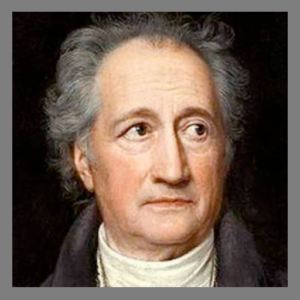
4. Right morality / right discipline / right action (Samma kammanta) [t = 1:48:50]
The fourth aspect of the Eightfold Noble Path is right morality, right discipline or right action. Here is Chögyam Trungpa Rinpoche, once again from The Myth of Freedom:
If there is no one to impose discipline and no one to impose discipline on, then there is no need for discipline in the ordinary sense at all. […] Ordinary discipline exists only at the level of relative decisions. If there is a tree, there must be branches; how- ever, if there is no tree, there are no such things as branches; Likewise, if there is no ego, a whole range of projections becomes unnecessary. Right discipline is that kind of giving-up process; it brings us into complete simplicity.
We are all familiar with the samsaric kind of discipline which is aimed at self-improvement. We give up all kinds of things in order to make ourselves “better,” which provides us with tremendous reassurance that we can do something with our lives. Such forms of discipline are just unnecessarily complicating your life rather than trying to simplify and live the life of a rishi. “Rishi” is a Sanskrit word which refers to the person who constantly leads a straightforward life. The Tibetan word for “rishi” is trangsong (Wylie: drang sron). Trang means “direct,” song means “upright.” The term refers to one who leads a direct and upright life by not introducing new complications into his life-situation.
That’s very relevant for us: not overcomplicating our lives, our commitments and our external world so that we don’t have time for practice. There’s a lovely quote attributed to Goethe that also sheds lights on this relationship between simplicity, directness and action:
Until one is committed, there is hesitancy, the chance to draw back, always ineffectiveness. Concerning all acts of initiative (and creation), there is one elemental truth, the ignorance of which kills countless ideas and splendid plans – that the moment one definitely commits oneself, then providence moves all. All sorts of things occur to help one that would never otherwise have occurred. A whole stream of events issues from the decision, raising in one’s favour all manner of unforeseen incidents and meetings and material assistance which no man would have dreamed would have come his way. Whatever you can do or dream you can, begin it. Boldness has genius, power and magic in it. Begin it now.

5. Right livelihood (Samma ajiva) [t = 1:51:07]
Next we come to right livelihood, Samma ajiva. We saw in the Shravakayana that right livelihood is presented much more in terms of avoiding certain kinds of work, which are seen as bad or wrong livelihood. But Trungpa Rinpoche is not looking so much at the kinds of work, but the whole idea of work, the whole idea of engaging in the world. Again from The Myth of Freedom:
The fifth point is “right livelihood.” According to Buddha, right livelihood simply means making money by working, earning dollars, pounds, francs, pesos. To buy food and pay rent you need money. This is not a cruel imposition on us. It is a natural situation. We need not be embarrassed by dealing with money nor resent having to work. The more energy you put out, the more you get in. Earning money involves you in so many related situations that it permeates your whole life. Avoiding work usually is related to avoiding other aspects of life as well […]
People who reject the materialism of American society and set themselves apart from it are unwilling to face themselves. They would like to comfort themselves with the notion that they are leading philosophically virtuous lives, rather than realizing that they are unwilling to work with the world as it is.
This is super-important advice, because many of us are tempted to indulge in slightly left-wing political fantasies. We’re down on materialism, we’re down on work, we’re down on capitalism. And, as Trungpa is saying, that kind of mindset is an unwillingness to work with the world as it is. Dzongsar Khyentse Rinpoche told a very funny story a few years ago where he was once working in London’s Soho handing out advertisements for escort services, just to practice his own right livelihood. And he said he was so terrified that someone Tibetan or Bhutanese might see him. In Trungpa’s book Work, Sex, Money (2011), Chapter 1 on “Sacred Society” expands on this idea:
As Buddhist practitioners or practitioners of meditation, we are supposed to be immersed in the contemplative tradition and spiritual practice. Why would we discuss work, sex, and money? If you are involved in spirituality, you may think you should transcend work, sex, and money. Perhaps you think you should live the contemplative life, a life in which those things don’t apply because you spend the whole day meditating. You should have nothing to do with those things. You shouldn’t have to think about work. Nobody should be involved with sex, because people shouldn’t have such lustful thoughts at all while living the contemplative life of meditation. And money – you should be involved with that least of all! What money? Who has any anyhow? Money – that’s the last thing we should think about. […]
Then the question is, are we really working on spirituality or not? If so, there is something that we might not have thought about: that spirituality isn’t really “spirituality” in an idealized sense. Do you think spirituality is something purely transcendental? It’s questionable. Real spirituality might have something to do with ordinary life. If spirituality does have something to do with everyday life situations, then relating to spirituality means contributing something to society as a whole. We have to associate with society in order to offer something to society. For some people, that is not an easy thing to accept or do at all.
And so, as we have said, the practice of the Middle Way means never giving up on samsara, never giving up on sentient beings, and reminding ourselves that everything is acceptable. And also reminding ourselves that it is a wrong view to think that samsara and nirvana are somehow separate. We’ve refuted this kind of dualistic thinking in previous weeks, but there’s something about the topics of work, sex, and money that are a very nice way of ensuring that are feet are firmly planted on the ground. They are not abstractions. They are very real. And for most of us, these are the areas where all of our ego and insecurity and aspiration and hope and fear and ambition and emotion – all of that comes up. So work, sex, money: just look at those areas in your life. How much has emptiness permeated those? This is real post-meditation practice.

6. Right effort (Samma vayama) [t = 1:55:23]
Here is Trungpa Rinpoche on right effort, Samma vayama:
There is no need to be continually just pushing along, drudging along. If you are awake and open in living situations, it is possible for them and you to be creative, beautiful, humorous and delightful. This natural openness is right effort, as opposed to any old effort. Right effort is seeing a situation precisely as it is at that very moment, being present fully, with delight, with a grin.
Once again, we are hearing the spirit of nonduality, just like His Holiness Dudjom Rinpoche’s “Joyful in all action, the Dzogchen yogi, happy in any company.”
7. Right mindfulness / right attentiveness (Samma sati) [t = 1:56:03]
Finally we come to the last two aspects of the Eightfold Noble Path, right mindfulness and right samadhi. As you may know, in the Dzogchen and mahamudra traditions we talk about the union of shamatha and vipashyana, so right mindfulness and right samadhi really merge into a union of the two. So Trungpa Rinpoche’s commentary on these two aspects of the path might sound quite similar, but let’s hear them. First, right mindfulness, Samma sati:
Right mindfulness does not simply mean being aware; it is like creating a work of art. There is more spaciousness in right mindfulness than in right effort. If you are drinking a cup of tea, you are aware of the whole environment as well as the cup of tea. You can therefore trust what you are doing, you are not threatened by anything. You have room to dance in the space, and this makes it a creative situation. The space is open to you.
We talked about this in Week 6 when we discuss dual and nondual awareness. This is very similar.
8. Right samadhi / right concentration (Samma samadhi) [t = 1:56:45]
The last aspect of the path is right samadhi or right concentration, Samma samadhi. Here once again is Chögyam Trungpa Rinpoche from The Myth of Freedom:
Samadhi has the sense of being as it is, which means relating with the space of a situation. This pertains to one’s living situation as well as to sitting meditation. Right absorption is being completely involved, thoroughly and fully, in a non-dualistic way. In sitting meditation the technique and you are one; in life situations the phenomenal world is also part of you. Therefore you do not have to meditate as such, as though you were a person distinct from the act of meditating and the object of meditation. If you are one with the living situation as it is, your meditation just automatically happens.
As we have said in the past, a lot of these nondual ways of seeing things may seem a little beyond us right now. But I think it’s important to understand that we can approach even the most foundational teachings of the Eightfold Noble Path from this nondual perspective.
The Six Paramitas: A Nondual Perspective
1. Generosity (Dana paramita) [t = 1:57:48]
Likewise, we can approach the six paramitas from a more nondual perspective. We’ve already talked about how the six paramitas are presented in The Words of My Perfect Teacher, and I’d like to go through Trungpa Rinpoche’s approach to this topic as well. He does a beautiful job here, also in The Myth of Freedom. First, here’s Trungpa Rinpoche on generosity, Dana paramita:
Thus the bodhisattva at the level of the 1st bhumi develops generosity. He is not acting generously in order to get something in return, but he is just being generous and warm. If you are acting kindly to someone in the conventional sense, it has the connotation of looking down upon someone lower, less fortunate than you. “I am rich and you need help because you are not like me.” The bodhisattva’s generosity need not be gentle and soothing; it could be very violent or sharp because he gives you what you need rather than what will please you superficially. He does not expect anything in return at all. He can be generous physically, giving food, wealth, clothes and shelter, or spiritually, giving food for the mind, restoring your mental health. The best kind of generosity according to the scriptures is that of working with another person’s state of mind. But the bodhisattva does not go beyond his own understanding; he regards himself as a student rather than as a teacher. Nor does he try to seduce the object of his generosity. He is aware not only of “me and them” but also of the space that both the giver and the receiver are sharing. The perception of the shared space is the operation of the sharp intelligence of prajña.
This is lovely. The idea that we give what the person wants, and also what they need. There’s no sense of looking down, no sense of being a teacher, no sense of being superior. No dualistic framing at all, not even the framing of being a peer. It’s “just being generous and warm,” with equanimity, just like the shining of the sun. Or back to the Ten Bulls, where “everyone I look upon becomes enlightened.”
2. Discipline (Shila paramita) [t = 1:59:41]
Next is Trungpa Rinpoche on discipline, Shila paramita:
Shila paramita of “morality” or “discipline.” The purity of the bodhisattva referred to by the shila paramita is based upon making friends with oneself, loving oneself. You are not a nuisance to yourself anymore; you are good company, an inspiration to yourself. You do not have to control yourself so as to avoid temptations or follow rules or laws. You find temptations less relevant and guidelines less necessary, because you naturally follow the appropriate patterns. There is no need to try to be pure, to painfully discipline yourself to be pure, to apply detergent to your natural condition. […]
The bodhisattva delights in working with people rather than regarding compassionate action as a duty. He has no dogma about how he should act or how other people should be. He does not try to reform or transform anyone because they do not fit his model. If people are determined to convert others into their mould, then they are attempting to reassure themselves by using the convert to relieve their doubt. The bodhisattva is not concerned with conversion; he respects others’ lifestyles, speaks their language and allows them to evolve according to their nature rather than making them into a replica of himself.
So again, there are lots of emptiness teachings here. First is the idea, as Trungpa Rinpoche says, of making friends with yourself. Loving yourself, coming to peace with yourself. This very much reminds me of the story of Milarepa and the demons in the cave. As long as we see evil ‘out there’, or even evil ‘in here’, it’s all our dualistic projection. So in the same way that a good therapist has to do their own work so that they don’t get caught up in transference and counter-transference with their clients, we need to make peace with ourselves and our narratives so that we’re not projecting our confusion onto other people and then trying to fix our confused projections. Next, “the bodhisattva delights in working with people,” and we have seen this many times before: the bodhisattva’s activity shines like the sun. The bodhisattva also has “no dogma” about how to act or to live, no right lifestyle or path. This is another very important application of emptiness: Do we delight equally in all people and all ways of life? They could be practitioners, kings, prostitutes, soldiers, Wall Street bankers, people who hold very different social, cultural or political views from our own. And for those of us who are anti-business, anti-science, anti-Republican and so on, we need to remember that other lifestyles are every bit as valid as our own. And if we reject them, we are not practicing emptiness.
3. Patience (Kshanti paramita) [t = 2:02:19]
Next, Trungpa Rinpoche on patience, Kshanti paramita:
Patience […] is particularly related with the idea that the bodhisattva does not desire to be a buddha but would rather work with sentient beings to save them from their confusion. Patience also implies heroism in the sense of having nothing to lose. The meditation practice connected with patience is working with territory. There is no territory that is yours or that is others’; everyone is in no-man’s-land. Not seeking enlightenment for ego’s personal benefit, you have no need for territory […]
You are free to do anything there, no one can make any demands upon you, so you can afford to wait, to be patient. […]
Patience does not mean forbearance in the sense of enduring pain, allowing someone to torture you at his leisure. […]
The bodhisattva can spring out like a tiger and claw you, bite you, crush you. He is not inhibited by conventional morality or idiot compassion. He is not afraid to subjugate what needs to be subjugated, to destroy what needs to be destroyed, and to welcome that which needs to be welcomed.
We have seen that patience in the Shravakayana is about non-reactivity and dealing with anger in a skilful way. In Trungpa’s explanation, we also have non-reactivity, but in a very different way. As we saw in The Words of My Perfect Teacher, there’s nothing to lose and nothing to defend. Most of our reactivity is fear-driven, driven by a misplaced desire to protect the egoic self. We seek to protect things that are ‘me’ and ‘mine’. But once we’ve transcended that kind of duality, there’s no longer any need to be reactive. And likewise, I love what Trungpa says here about patience meaning that the bodhisattva has no desire for enlightenment. We saw this at the end of Chapter 11, where Chandrakirti concluded by saying that the Buddha chose not to even become enlightened out of his compassion.
Patience is also central to Rinpoche’s wonderful story about the Casablanca coffee shop from Week 7, where the bodhisattva takes all the time he needs to make sure he engages in precisely the right action. We are talking about that kind of patience. Going back to Guru Rinpoche’s “action as fine as flour”, the bodhisattva is never in a hurry, never missing what’s important. So again, for us, noticing our own tendency to rush and speed through life. Do we have this kind of patience? In this way, we can understand that even patience can be an emptiness practice.
4. Diligence (Virya paramita) [t = 2:04:34]
Next is Trungpa Rinpoche on diligence, Virya paramita:
Virya […] is taking delight in and working hard with whatever working base or material we are presented with-our state of mind, our traditions, our society. It is not taking sides for or against our traditions or our state of mind, but it is taking delight in them and then working with them. It is not enough to reject superficially the different aspects of the world around us. It is too simple-minded just to abandon traditional morality as being old- fashioned, like an old clothing style, and then substitute a swinging morality, an up-to-date, “mod” morality. Many of the young reject tradition altogether, even the smell of it. They see no truth in it at all. ”I’m unhappy, neurotic because of them – my parents, my teachers, the media, the politicians, the psychiatrists, the capitalists, the clergymen, the computers, the scientists.” We denounce the government, the schools, the churches, the synagogues, the hospitals. But there is some uncertainty in this stance. Perhaps there could be some truth in what the establishment says, in the way it does things? […]
The next part is very important:
Sanity lies somewhere between the inhibitions of conventional morality and the looseness of extreme impulse, but the area in-between is very fuzzy. The bodhisattva delights in the play between hesitation and extreme impulsiveness – it is beautiful to look at – so delight in itself is the approach of sanity. Delight is to open our eyes to the totality of the situation rather than siding with this or that point of view. The bodhisattva does not side with rejecting convention, mocking everything out of sheer frustration, trying to get the world to acknowledge him. Nor does he side with blind dogma, holding back out of fear, trying to mould the world to conform to rigid ideas and rules. The bodhisattva takes delight in polarities but does not side with any extreme.
There is no blame, so the bodhisattva is really taking accountability. There is self-authorship, not rebellion. The bodhisattva internalizes the view. Here we clearly have both elegance and outrageousness, and I love Trungpa Rinpoche’s expression of this idea as the “play between hesitation and impulsiveness.” As we apply that to ourselves, how does that “play” show up in our lives? In particular, to what extent does our action correspond to the description in the final line, “the bodhisattva takes delight in polarities but does not side with any extreme”? That’s a really great teaching for our own lives, as our lives are filled with complexity, diversity and polarities, but in most cases we tend to pick one extreme. As we reflected earlier when talking about conflict, how can we learn to delight in the polarity, to see both sides (or all sides), and transcend our narrow dualistic stance? And not just to transcend the dualism of the Eight Worldly Dharmas, but to delight in polarities and transcend the dualistic stances we might take towards any aspect of a view, a position, or a person. How well are we practicing this?
5. Meditation (Dhyana paramita) [t = 2:07:34]
Next is Trungpa Rinpoche on meditation, Dhyana paramita:
The paramita of the 5th bhumi is panoramic awareness. This meditative state has been called dhyana in the Indian tradition, ch’an in the Chinese tradition, and Zen in the Japanese tradition. They all mean a state of total involvement, without centre or fringe. If there is a centre and a fringe, then our state of mind ceases to be one of total involvement because we have to keep track of both ends; a sense of polarity is always present. So dhyana or Zen is awareness without a watcher. In the superficial sense, when we speak of awareness, we mean egocentric watching, knowing what we are doing, knowing where we are supposed to be and how we handle the situation, which is quite a complicated process. We have to keep track of ourselves and our situation. Awareness in the sense of Zen is much simpler. The Tibetan word for it is samten (Wylie: bsam gtan): sam means “awareness,” ten means “making stable.” So samten means “stable awareness,” sane awareness rather than neurotic awareness, awareness in the sense that there are very few things to keep track of because everything has been simplified into one situation.
We’ve talked about dual and nondual awareness before. And as we said before, the nondual practice Trungpa Rinpoche describes is very different from contemporary mindfulness teachings, which are very dualistic. And like a lot of Dzogchen advice on nondual practice, Trungpa really emphasizes simplicity. As Dzongsar Khyentse Rinpoche often says, the reason that we have difficulty practicing and realizing the nondual teachings is because they’re too simple. We miss them because we’re so busy creating complications.
6. Wisdom (Prajña paramita) [t = 2:09:04]
Finally we come to the sixth paramita of wisdom, Prajña paramita. We spent the whole of Chapter 6 on this topic, but just in summary Trungpa Rinpoche says:
Prajña cuts through the pieties of the bodhisattva’s approach – being extraordinarily compassionate, being smooth and skilful, able to handle any situation, the syrupy, honey-like quality of the bodhisattva, being sweet and kind and gentle and at the same time slippery. Prajña cuts through any subtle attitude, any sense of virtue or manipulation, any sense of fixed concepts.
I love Trungpa Rinpoche’s focus on the “pieties” of the bodhisattva’s self-narrative. This takes us back to Jay Garfield’s point that Buddhist ethics is about changing the narrative, and how in previous weeks we’ve kept returning to the theme of the baseless self and the emptiness of all self-narratives. Here Trungpa Rinpoche is talking about prajña, and he goes straight for our self-narrative. And in particular, he counsels us not to get caught in romantic or heroic or spiritual self-narratives as bodhisattvas or practitioners. All this is just another ego trip. This advice is supremely important.

Some practice advice [t = 2:10:11]
I wanted to share a few words of practice advice I’ve received from Rinpoche over the years, particular as regards post-meditation practice and action in the world:
As soon as we give up thinking how it should be, everything works.
•••
Be an ideal husband, consultant, whatever. Don’t “burn the nose” of others. But when it matters, you should be like a silk scarf tied round a rock of iron. So, although you are following others’ ideas of how it should be, now you’re free. You have the view! You can do whatever you like – you look at the mirage and know it’s a mirage. Then you can decide if you want to go and get water. You can go if you want, but because you have the view, you won’t be disappointed if you don’t find any!
•••
We should be careful not to act with the intention of flattering people or getting people to like us. Better to be honest and straightforward. Be genuine.
•••
When it comes to cultivating virtues, even the virtues of humility and devotion, don’t fall into the trap or burden of getting stuck there. We need good qualities, but we must not get stuck with them.
And there are two core pieces of advice that have stayed with me over the years:
Nothing to abandon, nothing to adopt.
•••
If it comes don’t suppress it.
I love them both, particularly the second one. I spent many years using it almost as a koan for myself to try and understand its meaning. I strongly recommend to you; it’s wonderful.
And less as practice advice, but more as a picture of how the path of the Middle Way can unfold, Rinpoche also shared a teaching from Nagarjuna’s disciple Aryadeva. He said training in emptiness is like dipping your jacket in a vat of acid. Once you remove the jacket it will still have the shape of a jacket as before, but all the individual cells of the fabric will have fallen apart. And then one day your master will come and shake you, and the jacket will simply fall apart. I love this image, and it goes back to the non-linear nature of the path that we talked about in previous weeks. If we persist with our practice of emptiness, it has the quality of breaking apart our structure. One day, our teacher will say the right word, just like Patrul Rinpoche asked Nyoshul Lungtok “Can you see the stars”? And at that moment our jacket will fall apart.

Towards pure perception [t = 2:13:16]
We’re going to transition now to the final stage of touching on pure perception and spontaneous action. I’d like to give a couple of quotes to set that up. The first is from Wisława Szymborska, who won the Nobel Prize for Literature in 1996, and she said:
The world – whatever we might think when terrified by its vastness and our own impotence, or embittered by its indifference to individual suffering, of people, animals, and perhaps even plants, for why are we so sure that plants feel no pain; whatever we might think of its expanses pierced by the rays of stars surrounded by planets we’ve just begun to discover, planets already dead? Still dead? We just don’t know; whatever we might think of this measureless theatre to which we’ve got reserved tickets, but tickets whose lifespan is laughably short, bounded as it is by two arbitrary dates; whatever else we might think of this world – it is astonishing. But ‘astonishing’ is an epithet concealing a logical trap. We’re astonished, after all, by things that deviate from some well-known and universally acknowledged norm, from an obviousness we’ve grown accustomed to. Now the point is, there is no such obvious world. Our astonishment exists per se and isn’t based on comparison with something else. Granted, in daily speech, where we don’t stop to consider every word, we all use phrases like ‘the ordinary world,’ ‘ordinary life,’ ‘the ordinary course of events’ … But in the language of poetry, where every word is weighed, nothing is usual or normal. Not a single stone and not a single cloud above it. Not a single day and not a single night after it. And above all, not a single existence, not anyone’s existence in this world.
I’d also like to offer the famous William Blake quote from The Marriage of Heaven and Hell:
If the doors of perception were cleansed every thing would appear to man as it is, infinite.
For man has closed himself up, till he sees all things thro’ narrow chinks of his cavern.

Spontaneous action [t = 2:15:42]
So we come to the third and final part, spontaneous action – the spontaneity of the Dzogchen yogi or the sage. In thinking about spontaneous action it’s good to bear in mind that it’s based on a deep foundation of practice. If you’ve seen live performances, like live jazz or improv, you know that the artists and musicians know what to do. They’ve had their equivalent of the 10,000 hours of training. They have mastery. They didn’t take shortcuts. They have all the skills they need to be creative, self-expressed, and spontaneous. Don’t fool yourself. You can’t get up onstage and play jazz unless you have mastered your instrument, especially when you are playing with a group of other musicians. It’s the same when it comes to our Dharma practice. When we think about manifesting the spontaneous action of the yogi, we first have to do our training. As Aristotle said:
We are what we repeatedly do. Excellence, therefore, is not an act but a habit.
There’s a lovely quote from Robert Pirsig, who wrote Zen and the Art of Motorcycle Maintenance:
Do you want to know how to paint a perfect painting? It’s easy. Make yourself perfect and then just paint naturally.
I love that. That’s exactly the idea of spontaneous action. A couple more. First, Doris Lessing:
Whatever you’re meant to do, do it now
The conditions are always impossible.
And then finally, a nondual example from Anton Chekhov, beyond words or concepts, which is very much the way of the Dzogchen yogi:
Don’t tell me the moon is shining
Show me the glint of light on broken glass
I mentioned earlier Rinpoche’s wonderful words “If it comes, don’t suppress it”, and “Nothing to abandon, nothing to adopt”. For those of you who have received Dzogchen teachings or read any of Longchenpa’s works, you will know these words come from Longchenpa himself, from the Precious Treasury of the Way of Abiding. He says:
With the pacification of all value judgments, there is abiding in the ultimate heart essence … do not suppress objects that manifest.
He goes on:
The way things arise without beginning or end cannot be suppressed.
And:
The nature of mind is natural great perfection. I pay homage to this, with nothing to discard or adopt.
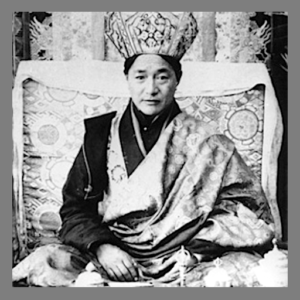
Calling the Lama from Afar [t = 2:18:25]
I’d like to close with one of HH Dudjom Rinpoche’s prayers, Calling the Lama from Afar. As you may know, he’s Dzongsar Khyentse Rinpoche’s grandfather as well as one of his teachers. I won’t read the whole thing, but just a few verses. It really is a beautiful Dzogchen prayer, and a prayer that really incorporates nonduality at its core.
The essence is the primordially unchanging nature, free from mental activity.
Dwelling in the originally pure Youthful Vase body of profound inner luminosity.
Dharmakaya Lama Yeshe Dorje, care for me,
Please bestow the blessing of obtaining great confidence in the View.
The uncreated nature is the unobstructed, indivisibly united radiant Mandala gathering
Dwelling in the display of the spontaneously accomplished Five Certainties,
Sambhogakaya Lama Dechen Dorje, care for me,
Please bestow the blessing of perfectly great skill in meditation.
The compassion is the Wisdom, free from falling into bias, liberated from extremes.
Dwelling in the naked essence, the All-Pervading Rigpa-Emptiness
Nirmanakaya Lama Drodul Lingpa, care for me,
Please bestow the blessing of greater skill in activity.
The primordial ground of self-awareness is unmoving and unchanging.
The Dharmakaya’s efflorescence of whatever arises is neither good nor bad.
Since pure awareness of Nowness is the real Buddha,
In openness and contentment we find the Lama in our heart.
When we realize that this unending Natural Mind is the nature of the Lama,
There is no need for attached and grasping prayers or artificial complaints.
By relaxing in uncontrived Awareness, the free and open natural state,
We obtain the blessing of aimless self-liberation of whatever arises.
Buddhahood is not attained by fabricated Dharmas;
Meditation made by the mind, fabricated by the intellect is the deceiving enemy.
Now clinging to style and manner is destroyed with crazy abandon.
Let this life be spent in this state of uninhibited naked ease.
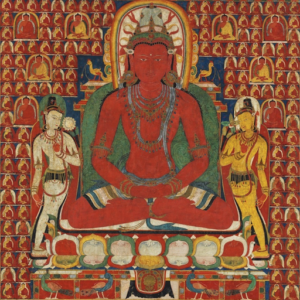
Dedication [t = 2:21:01]
And so, with that, we come to an end. And I really wish that for all of you, may this life be spent in this state of uninhibited naked ease. I really hope that our time together has helped establish the view of emptiness for you, and I sincerely hope you are inspired to go and practice to attain this result.
I would like to offer a dedication. Whatever merit we may have gained during the last eight weeks, including whatever understanding we may have, whatever inspiration to practice, whatever gratitude to Rinpoche, to the teachings, to the teachers, may we dedicate this to the enlightenment of all sentient beings.
[10 seconds]
I’ll close with the dedication prayer from Shantideva’s Bodhicharyavatara:
And now as long as space endures,
As long as there are beings to be found,
May I continue likewise to remain
To drive away the sorrows of the world.
And with that, I thank you very much. And I wish you the very best, and look forward to our paths crossing again in the future. Good evening.
[END OF WEEK 8]
© Alex Li Trisoglio 2017
Transcribed and edited by Alex Li Trisoglio
With gratitude to Valerie Neal, Rick Scott and John West for help with transcription
Last updated January 23, 2021